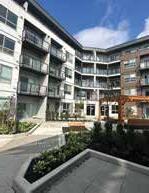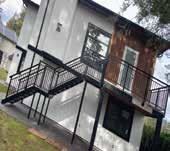













































































kMm vfly vrkrF dI loV hY.



August 2, 2025 | 10:00 AM – 4:00 PM | Abbotsford Centre | Free Public Event
In a time where ego, division, and coldness quietly shape our world, a new wave is rising. A wave that brings us back to our roots, to humility, kindness, and love.
The HKL Movement is not just an event, it’s a heartfelt call to humanity. It invites us to slow down, to truly see one another, and to reconnect through shared humanity. In a world so often defined by barriers and labels, this movement reminds us of something deeper: we are all brothers and sisters.
On August 2nd, you are warmly invited to be a part of a powerful and uplifting experience at the Abbotsford Centre. This
awj dI dunIaf ivwc, ijwQy hMkfr, vwKrypx aqy TMzypx ny sfzIaF idlF nUM vMizaf hoieaf hY — AuQy HKL mUvmYNt sfnUM muV afpxy asl rUhfnI rsqy vwl vfpsI dI bulfht dyNdf hY.
Humility, Kindness & Love (hlymIaF, hmdrdIaF aqy muhwbq) isrÌ iqMn Èbd nhIN — ieh iqMn jIvn muwl hn jo sfnUM Xfd idvfAuNdy hn ik asIN sfry iewk ho ky iewk pirvfr hF. ieh mUvmYNt sfzI sFJI iensfnIaq, iewk dUjy dI iewËq, qy swcy irÈiqaF nUM jIvMq krdf hY.
2 agsq nUM, sfry pirvfrF nUM, nOjvfnF nUM, bËurgF nUM, qy hr idl nUM swdf idwqf jFdf hY ik
aYbtsPorz sYNtr ivwc ho rhy ies muÌq smfijk smfgm df ihwsf bxo. ieh idn pRBfvÈflI ivc-
free community event will be filled with inspiring talks, soulful music, prayer, and messages of unity. It’s an opportunity to pause, reflect, and be surrounded by people who believe in the power of humility, kindness & love.
Let this be a day where we celebrate not what separates us, but what binds us together. Let it be a day where we choose warmth over coldness, unity over ego, and love over fear.
Bring your families, friends, elders, and youth. All are welcome — every heart, every soul.
Let’s walk together on the path of Humility, Kindness & Love.
frF, afqimk sMgIq, ardfs, aqy iewkqf dy sunyihaF nfl BrpUr hovygf.
ieh idn sfzI soc nUM nvF rfh dyvygf — ijwQy asIN qkVI dI QF inmrqf nUM, ivCoVy dI QF iewkqf nUM, aqy zr dI QF ipafr nUM cuxFgy. afpxy idl nUM KolHo — aqy sfzy nfl imlky ipafr dI ieh lihr bxo.
sLnIvfr, 2 agsq 2025
svyry 10 vjy qoN Èfm 4 vjy qwk
aYbtsPorz sYNtr ieh smfgm muÌq hY

The Province is funding local community projects throughout B.C. to improve planning for evacuation routes and public notifications to keep people safe and informed when emergencies occur.
“It’s vital that communities have clear evacuation routes and dependable notification systems to keep people safe in the event of an emergency,” said Kelly Greene, Minister of Emergency Management and Climate Readiness. “These projects will improve the information available to communities, residents and first responders so they can act quickly and protect people when the need arises.”
Government is providing nearly $2 million, through the Community Emergency Preparedness Fund (CEPF), to local governments and First Nations. This funding will support 51 communities to develop and update their plans through 42 public notification and evacuation route planning projects. Projects include mapping routes, improving evacuation and public notification plans, and running training exercises to test plans before an emergency occurs.
In 2023, the Columbia Shuswap Regional District (CSRD) received $29,940 through this fund to update local evacuation route plans and raise awareness about Alertable, the regional district’s emergency alert system. Local public notification systems, such as Alertable, used by local governments or First Nations, are another way for residents to receive the information they need during an emergency. Growing awareness has led more residents to download the app, giving them a direct way to receive crucial emergency information from CSRD quickly and directly.
“The CSRD consists of many high-risk, rural communities with complex evacuation needs. Funding received in 2023 enabled our program to address many of those challenges,” said Cathy Semchuk, emergency program co-ordinator, Columbia Shuswap Regional District. “It also provided the ability to incorporate climate change considerations, helping to develop a robust evacuation planning process. With this year’s funding, we will further strengthen community resilience to evolving climate risks.”
This round of funding will support projects throughout B.C., including:
enhancing hazard preparedness for people in the Cowichan Valley Regional District by developing evacuation route plans. This will incorporate map-based and areaspecific information plans so people better understand risks and safe routes.
enhancing preparedness and resilience in Tla’amin Nation through updated evacuation route plans. This project will involve working with BC Ferries, RCMP, Powell River Fire Rescue, and Powell River Search and Rescue to map the best routes by road, water, air and walking. It will also catalogue transport resources and determine the scope and availability of early warning systems so people can evacuate safely and quickly.
updating evacuation routes and notification plans in Merritt based on community feedback from its experiences with flooding in 2021. This includes community engagement sessions, mapping and workshops for residents to better understand
PUNJABI PATRIK A STAFF pMjfbI pwiqRkf stfP

safe evacuation routes and how people will be notified.
The CEPF provides funding to boost community readiness for various natural hazards and climate-driven emergencies. This fund is administered through the Union of British Columbia Municipalities (UBCM).
Quotes:

Hegus John Hackett, Tla’amin First Nation –
“As a fly-in, ferry-out community, we are used to taking care of ourselves when times get tough. This funding will help us to collaborate with local agencies so that we are efficient in times of emergency. These are plans we hope we’ll never need, but are essential to have.”
Kate Segall, chair, board of directors, Cowichan Valley Regional District –
“Through this funding, we will develop evacuation route plans for our region. These new plans will assist our Regional Emergency Operations Centre to make more informed decisions during emergencies, including supporting our dedicated response agencies like fire departments and RCMP.”
Adam Hart, emergency management coordinator, City of Merritt –
“This funding will support the City of Merritt develop a more detailed, inclusive and systematized evacuation plan that integrates lessons learned from the 2021 Coldwater River flood and subsequent evacuation of Merritt. Improving evacuation planning is one of several emergency planning and public education projects currently being undertaken by the City of Merritt. We are grateful for the support for this work provided by both the ministry and UBCM.”
Trish Mandewo, president, Union of British Columbia Municipalities –
“The Community Emergency Preparedness Fund continues to deliver critical support to communities working to safeguard residents during emergencies. This funding strengthens local capacity to plan and communicate effectively in high-stress situations, ensuring that people have the information they need to stay safe. UBCM is glad to administer this program on behalf of the Province and support communities across B.C. to enhance emergency readiness.”
Chief Editor/Publisher : Dr. Andy Sidhu | General Manager : Dave Sidhu | Administration Executive : Ronnie Sidhu muwK aYzItr/ pbilsLr zf aYNzI
Punjabi Editor
Advertising Executive Photographer
Layout Designer
Graphic Designer
Gurdeep Singh Grewal
Paramjit Singh Kanda
Shingara Shergill
Gurmeen Banipal
Gurjeet Kaur Muhar
Administrative Assistant : Gurneet Sidhu aYziminstRyitv aisstYNt :




Unit #24 - 3275 McCallum Road Abbotsford B.C. V2S 3M7 (Across

nhIN smJx vflf ivÈf hY ivigafn
mnpRIq kOr
BfrqI iswiKaf pRxflI dI sB
qoN vwzI kmI hY ik ies ’c jo
vwD Xfd rwK skdf hY, vwD
aMk lYNdf hY. sfzy ividafrQI
iesy ivc AulJy rihMdy hn ik
AunHF nUM qF ivÈf-vsqU Xfd hI
nhIN rihMdy. Éfs qOr ’qy jdoN
bwicaF dy pypr nyVy afAuNdy
hn, AunHF df qxfa hor vwD
jFdf hY.
BfrqI iswiKaf pRxflI dI sB

qoN vwzI kmI hY ik ies ’c jo vwD Xfd rwK
skdf hY, vwD aMk lYNdf hY. sfzy ividafrQI
iesy ivc AulJy rihMdy hn ik AunHF nUM qF
ivÈf-vsqU Xfd hI nhIN rihMdy. Éfs qOr ’qy
jdoN bwicaF dy pypr nyVy afAuNdy hn, AunHF df
qxfa hor vwD jFdf hY. ËrUrI nhIN ik hr
ividafrQI jo pfT cMgI qrHF smJ cuwikaf
hY, ilKx smyN vDIaf qrIky nfl ÈbdF nUM
AulIk sky. aksr ilKx smyN ivigafnk
Èbd Xfd hI nhIN kr pfAuNdy.
pihlF ËrUrI hY pfT nUM smJ lYxf : iswDf rt
ky Xfd kIqf pfT jfxkfrI nhIN mMinaf jf
skdf. qusIN cMgI qrHF pfT nUM smJx dI
koiÈÈ kro. kdy vI vfr-vfr aiDafpk qoN
puwCx qoN sMg nf mMno.
muwK nukqy ikqfb ’c ryKFikq kro : ivigafn
dI ikqfb nUM khfxIaF dI ikqfb vFg pVHo.
pVHdy smyN jo vI jfxkfrI ËrUrI hY, hyTF ryKf
lgfAuNdy jfਓ.
icwqr bxf ky : ivigafn dI kfÌI smJ
icwqrF rfhIN drsfeI jFdI hY. zfiegRfm
afDfirq iswiKaf igaf Auwqr hmyÈf leI
ien-ibn idmfÊ ’c Cp jFdf hY.
kfpI ’qy nots ËrUr ilKo : ijs qrHF qusIN ikqfb ’qy muwK nukqy ryKFikq kIqy hn, ienHF nUM afpxIaF kfpIaF ’qy ËrUr ilKo. Ploa cfrt bxf ky ilKy gey nots asIN pYrHf pVHn nfloN afsfnI nfl Xfd rwK skdy hF. duhrfeI : bxfey gey nots nUM muV vfr-vfr duhrfieaf jfvy, rwtf nhIN lgfAuxf, bs mn lgf ky pVHnf hI quhfnUM ivigafn dy nyVy iljf skdf hY. ijMnf ho sky, muV-muV ilK ky Ploa cfrt afid dI shfieqf nfl afsfnI nfl quhfzy mn ivc Aukr jfvygf. Xfd rwKo ik ivigafn smJ afDfirq ivÈf hY, smJx nfl rock lwgygf qy rwtf lgfAux nfl sËf bx jfvygf.






BC Hydro has launched a new call for power for 2025 to secure new sources of affordable, clean or renewable electricity that will support British Columbia’s expanding economy and create thousands of skilled jobs.
“B.C. will be the economic engine of Canada’s new economy, and that engine will be powered by abundant clean electricity,” said Premier David Eby. “By boosting our clean-energy supply in partnership with First Nations, we are supporting growing communities and industries while creating thousands of good-paying jobs and making life more affordable. This is just one way we are securing our future in the face of escalating threats from President Trump.”
As part of the 2025 call for power, BC Hydro has issued a request for proposals (RFP) to acquire up to 5,000 gigawatt-hours annually of electricity from large, clean or renewable projects in partnership with First Nations and independent power producers. This is the equivalent of powering 500,000 homes in British Columbia.
In 2024, BC Hydro completed its first call for power in 15 years, which resulted in 10 new renewable-energy projects with First Nations asset ownership between 49% and 51%. These projects are expected to generate up to $6 billion in private investment, with up to $3 billion under First Nations ownership, and create approximately 2,000 jobs annually during construction. The projects will also deliver power at prices 40% lower than BC Hydro’s last clean-power process in 2010, after adjusting for inflation.
The 2025 call for power represents the next phase of B.C.’s renewableenergy expansion strategy – deepening First Nations partnerships, unlocking investment and accelerating progress toward the province’s economic and climate goals.
“This is our moment to build the cleanenergy future British Columbians deserve,” said Adrian Dix, Minister of Energy and Climate Solutions. “We’re doubling down on renewable power, expanding our grid and supporting First Nations leadership in energy
development, all while helping communities and businesses access the clean electricity they need to grow.”
The RFP eligibility requirements include:
- generate clean or renewable energy;

- have capacity greater or equal to 40 megawatts;
- have a minimum of 25% equity ownership held by First Nations; and
- be operational by Oct. 1, 2033.
BC Hydro plans to award electricity purchase agreements to selected projects in early 2026.
“Through collaboration with government, First Nations and the clean-energy sector, BC Hydro is making significant investments and seeking new partnerships to secure B.C.’s clean-energy future,” said Chris O’Riley, president and CEO, BC Hydro. “This call for power is a key step in expanding our
electricity system to meet growing demand while ensuring security, sustainability and affordability.”
The 2025 call for power is part of the Clean Power Action Plan, which aims to boost grid resilience, expand grid capacity and support B.C.’s transition to a clean economy.
BC Hydro will issue calls for power every two years, alongside delivering $36 billion in infrastructure investments through its 10-year capital plan, enhancing grid reliability and supporting growth in every region of the province.
The governments of B.C. and Canada are making changes to the AgriStability program to provide more financial support to B.C. farmers, following a virtual meeting of the federal, provincial and territorial ministers of agriculture.
“Now is the time for unity, and we’re working together to deliver for producers right across the country to make sure our programs work for them,” said Heath MacDonald, federal Minister of Agriculture and Agri-Food. “That’s why, at our meeting last week, we agreed to make changes to AgriStability so that producers facing trade uncertainty and dry conditions have more protection.”
Effective Friday, July 25, 2025, there are several enhancements for the 2025 AgriStability program year, including:
increasing the compensation rate from 80% to 90%, meaning producers will receive 90 cents for every dollar of eligible income decline;
doubling the compensation cap from $3 million to $6 million to offer more equitable protection for larger farms and ranches; and
advancing interest-free payments to farmers for up to 75% of their anticipated final claim.
B.C. farmers have until Thursday, July 31, 2025, to enrol in AgriStability for the 2025 program year. Application details are available here: https:// www2.gov.bc.ca/gov/content/industry/agriculture-seafood/programs/ agriculture-insurance-and-incomeprotection-programs/agristability
“We raised concerns we have been hearing from farmers here in B.C. at a national level, and our advocacy is resulting in improvements to AgriStability so B.C. farmers can continue to produce high-quality local food,” said Lana Popham, B.C. Minister of Agriculture and Food. “B.C. led the way on this initiative, making these very same changes to our program last year. It’s great to have the federal government partner with us this year to continue to support farmers.”
These changes respond to international trade concerns and will help many B.C. farmers who are enrolled in the AgriStability program and have suffered income losses from occurences such as extreme weather damage.
“B.C. Agriculture Council welcomes these enhancements to the AgriStabil-
ity program, which plays a critical role in supporting agricultural producers navigate uncertainty,” said Jennifer Woike, president, B.C. Agriculture Council (BCAC). “The improvements take into account the practical considerations that producers must apply to their operations as they respond to market and environmental challenges. BCAC remains committed to working with all levels of government on important program enhancements that support food security and sustainable practices to ensure the economic viability of farms.”
AgriStability is part of the Sustainable Canadian Agricultural Partnership and helps protect farmers from large drops in income due to factors such as poor yields, rising costs or market changes.


A recently released What We Heard report highlights that B.C.’s Filipino community shares a vision for a provincial cultural centre dedicated to community spirit, recognition and representation, and programming that supports people in British Columbia to learn about Filipino culture and heritage.
The contributions of the Filipino Canadian community in B.C. are an important part of the province’s history, culture and success. That’s why government launched a public engagement survey on May 31, 2024, that invited people in British Columbia, especially those of Filipino heritage, to share their vision for a provincial Filipino cultural centre. The 10-question survey was open until Dec. 31, 2024, and received more than 1,200 survey responses.
“We are proud to recognize Filipino Canadians’ heritage and their vital contributions to B.C.’s success,” said Anne Kang, Minister of Tourism, Arts, Culture and Sport. “We’re grateful to the many people who completed the survey and the communities who contributed to the roundtable discussions. We’re heartened to know that our work going forward will be community informed and community-led.”
As part of the engagement and to ensure meaningful collaboration, the Province hosted roundtable discus -

sions with key representatives from Filipino community organizations in August 2023, September 2023 and February 2024. These roundtables provided an open forum for community leaders to discuss government’s commitment, the engagement process and the steps needed to advance the development of a cultural centre.
“This survey and report help ensure that we recognize Filipino Canadians’ impactful contributions to B.C. in a way that honours their needs and desires,” said Amna Shah, parliamentary secretary for anti-racism initiatives, mental health and addictions. “We look forward to continuing to work alongside the community to realize their vision and move forward in our collective goal of building a province that is more inclusive and representative.”
The Province did this work in collaboration with Mabuhay House Society, which helped in community engagement planning and raising awareness. The society formed partnerships with more than 30 community organizations and engaged in more than 30 events for this engagement.
With the community’s vision for a cultural centre reflected in the What We Heard report, government will continue to work with local Filipino Canadian organizations and communities to advance this project.

jy qusIN dMd lvfAuxy hn jF iPr lgvfey hn dMd purfxy hn aqy nvyN lvfAuxy hn quhfzy lvfey dMd iZqly hn jF tuwt gey hn blrfj nfl apfieMtmYNt bxfE aqy Kfxf
cMgI qrHF KfE jy quhfzy sfry dMd nhIN inkly pr Kfxf TIk qrHF nhIN Kf huMdf qF blrfj nUM imlo ieh quhfzI syvf leI srI ivwc hn.



We do all types of Renovations
asIN hr qrF dI rYnovysLn krdy hF:
• Laminate • Tiles
• Painting
• Framing
• Drywall Finishing
• Kitchen Cabinets
• Stone Works
• lYmInyt
• pyNitMg
• PRyimMg • tfeIlF
• zrfeIvfl iPinisLMg
• ikcn kYbints
• ston vrk
• Plumbing • plMibMgL
You will get the best quality work at DGB home renovation
New Basement and Bathroom Extension
nvIN bysmYNt aqy bfQrUm aYkstYnsLn CALL GAGAN : 604-791-3933








It can be exciting to get a credit card for the first time. It provides the opportunity to build credit—something that most young adults don’t have. As a new credit card holder, here are some things to remember so that you make your credit card work for you:
Credit can be costly. If you can’t pay back the full amount you spent each month, it’s a warning sign that you may be spending more than you can afford. Avoid paying interest by paying off the entire balance of a credit card every month. Interest charges can add up quickly, and you may get into debt and hurt your credit score. Bad credit can follow you for years to come.
Take advantage of online resources, like the Financial Consumer Agency of Canada’s credit card payment calculator, which lets you see how long it would take to pay off a credit card if you don’t pay the full amount each month. This can help you understand exactly how interest works.
Build credit using a secured credit card. If you’re uncertain about getting a traditional credit card, consider starting with
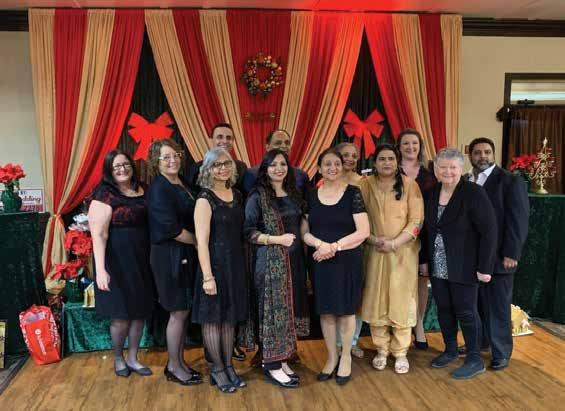
a secured credit card. To get one, you’ll have to give your bank a security deposit to cover the credit limit. If you don't make your payments, the bank can use your deposit to pay the money you owe.
These types of cards can help young adults build a good credit history without the risk of defaulting.
Know your rights. Banks have to follow certain rules regarding your credit card agreement. For example, they must clearly set out the key features of the credit card in an information box. This includes information like the interest rates, annual fees and other charges.
Your bank may make changes to the features or the terms and conditions of your credit card. If so, they must provide you with the details in writing at least 30 days before the changes take effect.
By understanding how your credit card works, using it responsibly and knowing your rights, you can better manage your money and start building a credit history that will lay a solid foundation for your finances.
aYbtsPorz bI sI
jLrUrI sUcnf
Auprokq susfietI mYNbrjL nUM sUicq kIqf jFdf hY ik imqI 8 agsq 2025 idn sLuwkrvfr nUM sfry mYMbrF dI smUihk imlxI hovygI. sfriQk sc ivcfr hovygI. smF dupihr 2 vjy qoN sLFm 4 vjy qwk df hovygf. Kfx pIx aqy cfh pfxI df Kfs pRbMD hovygf. ieh pRogrfm hYrItyj gurdvfrf sfihb aYbtsPorz ivKy hovygI. afp sB kmytI mYNbrjL aqy sInIar susfietI mYNbrjL nUM phuMcx dI ikRpflqf krnI jI.
DMnvfd sfihq
suKdyv isMG brfV (pRDfn) suKdyv isMG mWlI (jnrl skwqr) smUh pRbMDk kmytI


•
• WCB
•
• Business Planning
• prsnl tYks
• pRoprfietr
• kOrporyt tYks
• pfrtnrisLp
• jI[aYs[tI, pI[aYs[tI & aYc[aYs[tI
• zbilAU[sI[bI[
• sI[afr[ey irvIAUjL
• ibjins plYinMg


isrÌ pMj anfjF nfl Gr ‘c hI bxfE sMpUrn mltIgryn aftf, guaFZI vI puwCxgy quhfzI qMdrusqI df rfË
ieh aftf quhfnUM kxk dy nfl-nfl hor anfj ijvyN ik Coly, jON, bfjrf aqy rfgI dy sfry Pfiedy dyvygf. ieh PfeIbr, pRotIn, ivtfimn aqy KixjF nfl BrpUr huMdf hY.
kI qusIN vI AunHF lokF ivwcoN iewk ho jo svyry AuwTdy hn aqy socdy hn, “awj mYnUM kuJ aijhf Kfxf cfhIdf hY jo mYnUM idn Br AUrjfvfn rwKy aqy mYnUM ishqmMd vI rwKy?” jF kI qusIN vI bfËfr ivwc imlx vfly mihMgy aqy imlfvtI afty qoN pryÈfn ho? jykr hF, qF ieh lyK quhfzy leI hY. mYN quhfnUM dwsdf hF, quhfzI ishq df sB qoN vwzf rfË quhfzI rsoeI ivwc hI Cuipaf hoieaf hY.
klpnf kro, qusIN grm, PuwlIaF-PuwlIaF rotIaF Kf rhy ho jo nf isrÌ suafd ivwc Èfndfr hn blik quhfzI qMdrusqI ivwc vI vfDf kr rhIaF hn aqy jdoN quhfzy guaFZI quhfnUM quhfzI byimsfl
AUrjf aqy cmkdfr cmVI df rfË puwCdy hn, qF qusIN muskrfAuNdy ho aqy kihMdy ho, “ieh qF Gr dy bxy mltIgRyn afty df jfdU hY.”
ienHF 5 anfjF dI loV
kxk: 5 iklo
Coly: 1 iklo
jON: 1 iklo
bfjrf (moqI bfjrf): 500 gRfm
rfgI/mMzUaf (iPMgr bfjrf): 500 gRfm
mltIgRyn aftf ikvyN bxfieaf jfvy
sB qoN pihlF, sfry dfixaF nUM cMgI qrHF sfÌ kro.
AunHF ivwc koeI kMkr, imwtI jF Krfb dfxy nhIN hoxy cfhIdy. ies qoN bfad, sfry dfixaF nUM GwtoGwt 4-5 GMitaF leI Duwp ivwc cMgI qrHF sukfਓ, jF qF vwKry qOr ‘qy jF iekwTy (jykr jgHf hovy). ies nfl AunHF ivwc mOjUd nmI dUr ho jfvygI aqy aftf lMby smyN qwk Krfb nhIN hovygf. jy qusIN cfho, qF qusIN CoilaF aqy jON nUM hlkf ijhf BuMno. ies nfl afty nUM imTfs imldI hY, pr ieh pUrI qrHF ivklipk hY. jy qusIN aijhf nhIN krnf cfhuMdy, qF ieh TIk hY.
jdoN sfry dfxy suwk jfx, qF AuhnF nUM iekwTy imlfਓ aqy nyVy dI imwl ivwc lY jfਓ. AuhnF nUM cMgI qrHF pIso. iDafn rwKo ik aftf bhuq bfrIk
nhIN pIisaf jfxf cfhIdf, QoVHf ijhf motf aftf vDyry pOÈitk aqy suafdI huMdf hY.
pIsx qoN bfad, afty nUM qurMq eyartfeIt zwby ivwc nf rwKo. iesnUM iewk vwzI plyt jF ktorI ivwc PYlfਓ aqy iesnUM pUrI qrHF TMzf hox idਓ. afty nUM pUrI qrHF TMZf hox qoN bfad hI eyartfeIt zwby ivwc rwKo. ies nfl aftf qfËf rhygf aqy ies ivwc gMZF nhIN bxngIaF.
mltIgRyn aftf ikAuN lfBdfiek hY?

ieh aftf quhfnUM kxk dy nfl-nfl hor anfj ijvyN ik Coly, jON, bfjrf aqy rfgI dy sfry Pfiedy dyvygf. ieh PfeIbr, pRotIn, ivtfimn aqy KixjF nfl BrpUr huMdf hY.
ies ivwc mOjUd Auwc PfeIbr smwgrI quhfzy pfcn qMqr nUM ishqmMd rwKdI hY aqy kbË vrgIaF smwisafvF qoN rfhq idvfAuNdI hY.
ieh aftf quhfnUM lMby smyN qwk pyt Biraf mihsUs krvfAuNdf hY, ijs nfl qusIN Gwt KFdy ho aqy Bfr nUM kMtrol krn ivwc mdd krdy ho.
ieh quhfnUM idn Br AUrjfvfn rwKdf hY aqy quhfzI rog pRqIroDk ÈkqI nUM vI vDfAuNdf hY. sB qoN mhwqvpUrn gwl ieh hY ik ieh pUrI qrHF ÈuwD aqy qfËf hY ikAuNik qusIN iesnUM afpxIaF awKF dy sfhmxy Kud iqafr kIqf hY.


anykF bImfrIafˆ dy shI ielfj leI hux sfzy koloˆ nvIˆ Koj nfl iqafr kIqIafˆ dvfeIafˆ lY skogy.
* mfeIgRyn. * joVfˆ dy drd. * koeI vI aMdrUnI bImfrI. * iksy vI qrHfˆ dI ienPYkÈn. * gRihsqI jIvn sbMDI smwisafvfˆ.
* AudfsI aqy Gbrfht rog. * cmVI dy rog. * ikwl muhfsy, iÌnsIafˆ afid. * Qfierfz.
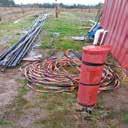
Review by Veeno Dewan.

The 2025 Ford Maverick compact pickup truck slots just below the mid-size Ford Ranger, and is available as a full-hybrid – as well as in a conventional gas-powered version. The Maverick is based on the same platform as the Ford Bronco Sport and Ford Escape and arrives as a four-door, five-passenger crew cab, with a 4-foot-5 bed. It has rapidly become the most popular compact pickup he market due to its sensible size, affordability, choice of model’s fuel economy and the excellent hybrid engine option.
For 2025, all Maverick trims get a revised front fascia and All-Wheel Drive is now available as an option along with a towing package. Wireless Apple CarPlay and Android Auto can now be integrated via the large 13.2-inch infotainment touchscreen. There is also a cool “Lobo” trim model – a kind of Ford factory 1980s/90s style custom mini-truck with a lower ride height, unique styling touches and the 2.0L EcoBoost engine with an 8-speed automatic transmission. Meanwhile, the OffRoad performance orientated Maverick Tremor version is now a offered as a stand-alone model.
No changes to the Maverick’s hybrid powertrain for 2025 which combines a 2.5L Atkinson-cycle four-cylinder engine with a hybrid system that delivers a combined 191 horsepower and 155 lb-ft of torque. It’s mated to an automatic continuously variable transmission (CVT) The optional engine choice is a gasoline engine turbocharged 2.0L “EcoBoost” fourcylinder unit making 250 horsepower and 277 lb-ft of torque. This is paired with an eight-speed automatic transmission and either Front wheel or All-Wheel Drive.
The 2025 Ford Maverick model comes in 12 trim levels priced from $34,500 to $48,000. The entry-level,


XLT Hybrid FWD model starts at $34,500. The mid-range XLT Hybrid AWD trim is $39,500. The Off-road themed Tremor AWD is priced at $48,000. Freight and PDI is $2,195.
We tested a mid -range Maverick XLT AWD that instead of the popular Hybrid engine, has the 2.0L EcoBoost four-cylinder mill paired with a 8- speed automatic transmission.
Optional equipment on our tester included the FX4 Off -Road package option as fitted, adding 17-inch aluminum wheels with all-terrain tires, Off-Road Tuned Suspension. skid plates. exposed front tow hooks, FX4 Off-Road box decal, Hill Descent Control, and an off-road screen in the instrument cluster. The XLT Luxury package was also fitted to our tester as an option adding comfort and convenience features such as heated front seats, a heated steering wheel, remote start, and LED box lighting. It also adds an 8-way power driver’s seat. This package also featured a Remote Start System for pre - warming or cooling the cabin before you enter. An engine block heater and the Ford CO pilot 360 Assist system option was also ticked.
Creature comforts in the XLT include a 13.2” touchscreen, rear row bench seat with flip-up under seat storage, air-conditioning, a rotary gear shift dial and front bucket seats. Base price for the XLT was $37,500. plus, the options ($5,570) total price was $43,070 adding $2,196 destination and delivery.

Interior wise- a lot of thought has gone into giving the Maverick a practical versatile bin designed for maximum functionality. Nice touches include larger water bottle holders in the door panels, a phone holder in the centre console; and plenty of storage cubbyholes, plus a wireless phone recharging pad.
The Maverick’s interior has rugged styling cues, with some cool use of colour and texture. The rear seats flip up for extra cargo storage. Overall interior room is good with comfortable seats and adequate leg room in the rear.
On the road, the Maverick ride offers a smooth and composed car-like feeling. The steering is nicely weighted and, the vehicle is responsive on acceleration and holds its own on the highway offering satisfyingly strong, linear power delivery.
The Maverick handles a variety of surfaces very well thanks to its well sorted suspension and dampers. The All - Wheel Drive on our tester offered good traction and control on rougher surfaces and some wet roads. Large bumps are soaked up compliantly while body roll is muted. The truck feels solid and durable. The Maverick non-hybrid 2.0L engine is rated at 9.4 L/100 km in combined driving. 10.6 for the city and a respectable 7.8 on the highway.
To sum up, the Maverick is impressive and is nice to drive. The smart interior, good road manners, compact size and the choice of a fuel-efficient hybrid powertrain or the well proven EcoBoost engine are all plus points. For buyers wanting a well priced fuel frugal small truck – walk this way!
2025 Ford Maverick XLT AWD: priced from $37,500. Price as tested with options destination and delivery. $45,265.
More info at www.ford.ca



Are you looking to expand your reach and connect with more customers? Advertise with The Patrika on our popular social media platforms!
Wide Reach: Tap into our growing audience on Facebook, Instagram, and our website.
Engaging Content: Your ads will be seen alongside our top stories and engaging content.
Targeted Campaigns: Tailor your message to reach your ideal customers. What We Offer:
Facebook Ads: Connect with our active community and drive traffic to your business.
Instagram Promotions: Capture attention with visually stunning ads.
Website Banners: Get prominent placement on our high-traffic website.
Sign up now and get a 20% discount on your first month of advertising! Ready to boost your business? Contact us today to get started!
Phone: 604-852-2288
E-mail: Ronnie@patrika.ca www.patrika.ca
Facebook: The Patrika
Instagram: thepatrikamedia

iesnUM sRI dy sfl, iewk grm mOsm iewk skfÌ dI qrHf suMdr ho skdf hY aqy dUjy Èfml ivwc Éqry vflf ho skdf hY. vwzy bËurg ies sivMg nUM dUijaF qoN vwD mihsUs krdy hn, pr bhuqnF qy kihxgy, “mYN TIk hF, icMqf nf kro.” iewk mYzIkl ividafrQI hox dy nfqy, mYN nrm ÈbdF AuprMq pYsIlojI ‘qy Brosf krn leI iswiKaf hY. buwZy hox vfly srIr ivwc Gwt psInf huMdf hY, ipafs dy lwCxF nUM dyr nfl mihsUs krdy hn, aqy TMzf krn ivwc ieqnf pRdrÈk nhIN huMdy. afm ibmfrIaF ijvyN ik ÈUgr jF Auwc rkq dbfa, nfl nfl pfxI nfst krn vflIaF dvfeIaF joVIaF jfdIaF hn, aqy smwisafaF ÉfmoÈI nfl bx skdIaF hn.
grmI dy dbfa dy pihly sMkyq kdy vI iËafdf pRBfvÈflI nhIN huMdy. iewk dfdI jF dfdf dy bfad svyry dy qy qoN kuJ QoVHf Qwikaf hoieaf mihsUs kr skdy hn jF kih skdy hn ik kmrf buZiæafnF qyry leI DuMdlf lwg irhf hY. ieh CotI-CotI sMkyq bhuq mhwqvpUrx hn. jy iehnF nUM nËraMdfË kIqf jFdf hY, qF bfhrI kmËorI aqy AulJx jldI pY skdI hY. iksy nUM CfAuN ivwc iljfxf, kwpVy iZwly krnf, aqy kuJ TMZy pfxI dy GUMt

dyxf bhuq vfrI siQqI nUM TIk krdf hY, pr mdd dI bulfvt krn ivwc ihckxf Kqrnfk hY. ibhqr hY ik 911 nUM ibhqr kfl krnf kdy dyr nfl krnf.
Gr nUM afrfmdfiek rwKxf sDfrx afdqF nfl
ÈurU huMdf hY. mwD svyry prdy bMd kro, iPr jdoN sUrj iKsk jFdf hY, AunHF nUM KolH idE. do iKVkIaF KolHo jF psMdIdf kursI dy nyVy iewk Cotf PYn rwKo. rsoeI dy bwqI dy sivwc dy kol iewk kMD df QrmomItr rwKxf dws zflr dI kImq vflf hY; lok jdoN Auh 30 qoN Aupr df aMk dyKdy hn qF Auh jldI pRqIikRaf krdy hn.
cMgI qrHF hfeIzrytyz rihxf sB qoN vDIaf rwiKaf hY. sfP pfxI kMm krdf hY, iPr vI bhuq sfry bËurg glfs Brnf Buwl jFdy hn jd qwk ik ieh ruickr nfh hovy. idn dOrfn cIlz inMbU pfxI aqy dupihr dy Kfxy nfl ibnf cInI vflI lwsI do afsfn ivklp hn jo afm qOr ‘qy shfiek huMdy hn. iewk Cotf syvf kokont pfxI ivwc potfsIam aqy hor Kixj Èfml huMdy hn, pr jo koeI potfisXm vDfAux vflIaF dvfeIaF lY irhf hY jF gurdy dIaF smwisafvF nfl pIVq hY, AuhnF nUM rutIn bxfAux qoN pihlF zfktr nfl jFc krnI
cfhIdI hY. iehI qyË jFc pfzr ielYktrolfeIt imks jF KyzF dy pIxF ‘qy vI lfgU huMdI hY. sjI cfh TMzI ÈfmF dI cox kr skdI hY, aqy cInI vflf iPË Kfs mOky leI huMdf hY. Kfxy ivwc vI kuJ soD nhI loVINdI. BfrI krI jF gBIry qilaf snYks pcfa nUM bhuq qyË krdIaF hn aqy srIr df qfpmfn vDfAuNdIaF hn. PlF nfl kwtI hoeI dhIN dI iewk bOAul jF dfl aqy coly dI iewk ÈFq Qfl nrm pyt ‘qy afsfnI nfl rwK jFdI hY.
bfhrI rutIn gfieb hox dI jrUrq nhIN hY. sUrj Augx ‘qy bigafcI krnf jF sUrj zuwlx qoN bfad cwlxf mwD idn dy Kqry qoN ibnf KuÈI ilafAuNdf hY. afpxy ipRaf jnF nUM iewk vwzy sUrjI topI pfAux leI kho aqy AunHF nUM pfxI dI boql lY jfx dI Xfd idvfE. jdnF Auh vfps afAuNdy hn, iqMn imMt df arfm Cwq dy pwKy hyTF krn leI Auqsfihq kro, iPr koeI hor kMm kro. kuJ Gr rfq nUM vI kdy TMzy nhIN huMdy. ies mfmly ivwc, iksy jnqk jgHf, ijvyN ik iewk lfiebRyrI, kMmkfjI smUh kyNdr jF nËdIkI KrIddfrI mfl ivwc smF ibqfAux bfry soco. ieh sQfn dohF

Aurjf qy idRÈ dy bdlfa idMdy hn, jo grmI dI lihr dOrfn mnobl vDfAuNdf hY. aKIr ivwc, sMprk ivwc rho. dupihr dy awDy ivwc iewk kfl jo “kI qusIN pihlF hI koeI pIx vflI cIË leI hY?” nfl ÈurU huMdI hY, iPr vI vfr-vfr iewk ijhI hI mihsUs kr skdI hY, pr ieh gYs krn qoN bcfa krdI hY. jykr dUrfeI dy kfrn imlxf muÈkl hY, qF iewk guaFZI dI jFc dy leI Xojnf bxf lE jF iewk Pon Xfd idvfxI dI vrqoN kro jo dupihr 12 vjy bfËy vjfAuNdI hY. grm mOsm iksy nUM vI Gr dy aMdr bMnH nhIN krnf cfhIdf, iPr vI ieh snmfn dI mMg krdf hY. iek iglfs inMbU pfxI, awDI iKwicaf hoieaf prdf, aqy iek qyË jFc nf huMdy hoey vI ieh kyvl nfiekfnf kdm nhIN hn, pr ieh sfrIaF cIËF iewkTy ho ky buËurgF nUM byhqr qrIky nfl byrI dy sIËn aqy lMbI Èfm dI roÈnI df afnMd lYx leI surwiKaq rwKx ivwc mdd krdIaF hn. grmI dIaF XfdF vDIaf bxfeIaF jFdIaF hn jdoN koeI vI cwkr afAux jF qqkfl shfieqf leI Bwjx nhIN krdf, aqy ieh Coty kdm iesnUM XkInI bxfAux ivwc shfiek huMdy hn.
lgpg 1000 mIl pRqI GMtf dI rÌqfr nfl GMm rhI hY DrqI, iPr vI sfnUM ikAuN nhIN huMdf GuMmx df aihsfs
ieMnI qyËI nfl GuMmx dy bfvjUd sfnUM ies df aihsfs nhIN huMdf. jdik Gwt rPqfr ‘c kuJ sikMtF leI gol-gol GuMmdy hF qF sfnUM cwkr afAux lwgdy hn. iPr aijhf ikAuN huMdf hY ik DrqI dy GuMmx df sfnUM aihsfs nhIN huMdf? afE, iesdI vjHf nUM smJIey.
kI qusIN kdy afpxy iksy dosq nfl gol-gol cwkr lgfey hn jF iek-dUjy df hwQ PV ky qyËI nfl GuMmy E? jy hF, qF quhfnUM pqf hovygf ik kuJ hI smyN ‘c cwkr afAux lwgdy hn. pr kI qusIN jfxdy ho ik ijs DrqI ‘qy asIN
rihMdy hF, Auh sUrj dy cfry pfsy lgpg 100 mIl pRqI GMtf dI rPqfr nfl GuMm rhI hY?
ieMnI qyËI nfl GuMmx dy bfvjUd sfnUM ies df aihsfs nhIN huMdf. jdik Gwt rPqfr ‘c
kuJ sikMtF leI gol-gol GuMmdy hF qF sfnUM cwkr afAux lwgdy hn. iPr aijhf ikAuN huMdf
hY ik DrqI dy GuMmx df sfnUM aihsfs nhIN huMdf? afE, iesdI vjHf nUM smJIey.
irlyitv moÈn df ipRMsIpl
sfnUM DrqI dI gqI df aihsfs ies leI nhIN
huMdf ikAuNik asIN aqy sfzy afs-pfs dIaF
sfrIaF cIËF iewko smyN ‘qy Ausy rPqfr nfl
GuMm rhIaF hn. ijvyN iek cwldI hoeI tRyn ‘c
bYTy XfqrI nUM tRyn dI rPqfr df aihsfs nhIN huMdf, jd qk Auh bfhr nhIN dyKdf, Esy qrHF asIN vI DrqI dI rÌqfr nfl GuMm rhy hF.
gRYivtI df aihsfs
DrqI dI gRYivtyÈnl Pors sfnUM sqHf ‘qy bMnHy
rwKdI hY. jy DrqI acfnk ruk jfvy qF asIN
sfry Ausy rPqfr nfl awgy vD jfvFgy, ijvyN kfr dy acfnk rukx ‘qy awgy vwl Jtkf
lwgdf hY. pr ikAuNik DrqI lgfqfr iek
siQr rPqfr nfl GuMm rhI hY, ies leI sfnUM koeI Jtkf jF bdlfa mihsUs nhIN huMdf.
DrqI df ivÈfl akfr
DrqI df akfr ieMnf vwzf hY ik iesdI rotyÈnl rPqfr hOlI mihsUs huMdI hY. hflFik, iesdI rPqfr 1000 mIl pRqI GMtf hY, pr ikAuNik ieh iek vwzy goly ‘qy PYlI hoeI hY, ies leI aYNgulr vyloistI Gwt huMdI hY. vfXUmMzl vI nfl GuMmdf hY

DrqI df vfXUmMzl vI Ausy rÌqfr nfl GuMmdf hY, ies leI sfnUM iesdI rPqfr df aihsfs nhIN huMdf. iehI kfrn hY ik ieMnI qyËI nfl GuMmx dy bfvjUd sfnUM hvf dy qyË buwly df anuBv nhIN huMdf. jy vfXUmMzl DrqI dy nfl nf GuMmdf, qF sfnUM lgfqfr iBafnk qUPfnI hvfvF mihsUs huMdIaF. iensfnI srIr dI azYpitibiltI iensfnF df srIr siQrqf leI bixaf hY. sfzy kMn dy aMdrlf ihwsf, jo bYlYNs bxfeI rwKdf hY, ieh DrqI dI siQr rPqfr df afdI ho cuwkf hY. ies leI sfnUM GuMmx df aihsfs nhIN huMdf, jd qwk rPqfr ivc acfnk bdlfa nf hovy.
aOrqF hmyÈf ishq dI axdyKI krdIaF hn, ijs nfl afsitEporoiss ho skdf hY. aOrqF ‘c 20 qoN 40 sfl dI Aumr ‘c pRjnn ikirafvF vwD huMdIaF hn, ies dOrfn srIr ‘c kfPI bdlfa huMdy hn. ies leI Kfx-pIx vwl iDafn dyxf ËrUrI hY. aksr kMmkfËI aOrqF pYrF dy drd dI iÈkfieq krdIaF hn. iksy dy pYrF dy Qwly qF iksy dIaF awzIaF ‘c drd rihMdf hY. ies dy ipwCy keI kfrn huMdy hn ijvyN ik vËn, hfrmons ‘c bdlfa, mfspyÈIaF ‘c iKwc, mfnisk qxfa, swt jF poÈk qwqF dI Gft kfrn smwisaf ho skdI hY.
afE, aOrqF ‘c pYrF dy drd kfrn aqy ies qoN bcfa bfry zf[ afkFkÈf rsqogI (kMsltYNt, ieMtrnl mYizisn, mydFqf hspqfl, gurUgRfm) qoN jfxkfrI hfsl krIey.
ikAuN huMdf hY pYrF ‘c drd ?
tYNzonfeIits - mfspyÈIaF aqy hwzIaF nUM joVn vfly sYwlF nUM tYNzn kihMdy hn. swt jF soiËÈ afAux nfl tYNzonfeIits ho jFdf hY. ies kfrn pYrF dy keI ihwisaF ‘c drd rihMdf hY.
sfeIitkf - qMiqRkf dy rsqy dy nfl nfl PYldy hoey drd nUM sfeIitkf kihMdy hn. jdoN rIVH dI

‘c drd ? mfihrF
hwzI ‘c hrnIeytz izsk ‘qy dbfa pYNdf hY. ieh drd afm qOr ‘qy sfeIitk nrv dy dwbx jF pRBfivq hox kfrn huMdf hY.
PfeIbRomfieljIaf - jdoN srIr dy kuJ ihwisaF ‘qy CUhx nfl krMt vrgf drd mihsUs huMdf hY, AusnUM PfeIbRomfieljIaf kihMdy hn. ies dy kuJ tYNzr puafieMts huMdy hn ijvyN ik awzIaF qy
ipMnIaF. inAUrolojIkl jF mskulr pyn, ÉUn dy pRvfh ‘c kmI dy nfl nfl qxfa vI mfspyÈIaF dI iKwc df kfrn bxdf hY. jdoN vI qusIN qxfa ‘c rihMdy ho qF quhfzIaF nsF iKwcdIaF hn. vD rhy koritsol qy hor qxfa hfrmon pYrF qy awzIaF qoN rkq pRvfh nUM hor aMgF qk lY jFdy hn. ies nfl pYrF qy awzIaF ‘c afksIjn aqy poÈk qwqF dI splfeI nhIN huMdI qy drd vD jFdf hY.
smJo drd dy kfrn
hfrmonl bdlfa - aOrqF dy srIr ‘c hfrmon ijvyN ik aYstrojn qy pRojYstyron df pwDr mfhvfrI, grBDfrx qy mInopOË dOrfn kfPI bdldf hY. ieh bdlfa nsF qy mfspyÈIaF nUM pRBfivq krdf hY ijs nfl pYrF ‘c soijÈ, BfrIpx qy drd mihsUs huMdf hY. pIrIazs dy pihlF jF bfad ivc AunHF dy pYrF ‘c akVfa qy Qkfvt huMdI hY.
nsF dI smwisaf (vYrIkoË vynË) - keI aOrqF dIaF nsF AuBr ky idKfeI dyx lwgdIaF hn, Kfs krky ipMnIaF nyVy. iesnUM vYrIkoË vynË kihMdy hn. ies ivc nsF ‘c KUn jmx lwgdf hY, ijs nfl soiËÈ qy drd huMdf hY.
poÈk qwqF dI Gft - ivtfimn, afiern qy potfÈIam dI kmI nfl KUn dI mfqrf GtdI hY, ijs nfl hwzIaF kmËor ho jFdIaF hn.
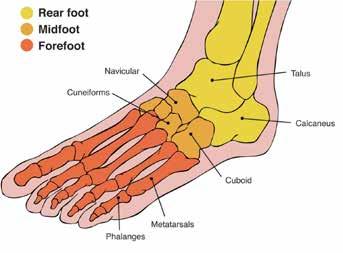
ishq dI nf hovy axdyKI - aOrqF hmyÈf ishq dI axdyKI krdIaF hn, ijs nfl afsitEporoiss ho skdf hY. aOrqF ‘c 20 qoN 40 sfl dI Aumr ‘c pRjnn ikirafvF vwD huMdIaF hn, ies dOrfn srIr ‘c kfPI bdlfa huMdy hn. ies leI Kfx-pIx vwl iDafn dyxf ËrUrI hY.
hwl kI hY?
pYrF, ipMnIaF qy awzIaF dy drd qoN rfhq leI nmk-pfxI ‘c pYrF nUM zubo ky iskfeI kr skdIaF
hn. pYrF dIaF AuNglF ipwCy aYikAUpRYÈr dy pOieMts huMdy hn, ijnHF nUM dbfAux nfl drd ‘c afrfm imldf hY.
bfzI stRYicMg krn nfl drd Gtdf hY. svyry dI Duwp lYx dI koiÈÈ kro.
srIr nUM hfeIzryt rwKo.
rsIly Pl KfE qy potfÈIam dI Gft nf hox idE. afiern dy pwDr dI jFc krvfE aqy hrI sbËIaF jrUr KfE.
rMg-ibrMgy Kfxy awKF nUM sohxy lwg skdy hn pr ieh ishq leI bhuq vwzf Éqrf hn. kuJ nklI rMg, jo Kfxy ivwc vrqx leI nhIN hn, nUM vI gupq rUp ivwc Kfx-pIx dIaF cIËF nUM rMgIn bxfAux leI imlfieaf jFdf hY. ienHF qoN bcx df iewko iewk qrIkf hY ik ijMnf ho sky nklI rMgF vfly BojnF qoN prhyË kIqf jfvy.
vwK-vwK suafdF dIaF awKF iKwcx vflIaF kYNzIaF aqy afeIs-kRIm rMgF df iewk BulyKf hn jo dyKx nUM suMdr lwgdy hn, pr aslIaq iesdy Ault hY. cfhy Auh pYk kIqy Kfxy dIaF cIËF hox jF rYstorYNtF ivwc iqafr kIqy pkvfn, ienHF sfiraF ivwc PUz zfeI jF rMg vrqy jFdy hn. isrÌ Bfrq ivwc hI nhIN sgoN pUrI dunIaf ivwc, ienHF nklI Bojn rMgF bfry icMqfvF pRgt kIqIaF jf rhIaF hn. afਓ rMgF dy ies kfrobfr nUM smJIey aqy AunHF dy ishq nUM hox vfly nuksfnF bfry jfxIey. sB qoN vwD vrqy jfx vfly Bojn rMg ryz zfeI 40: cfhy ieh kYNzI hovy, bykz sfmfn hovy, sfPt zirMks hovy jF dvfeIaF, ieh PUz zfeI sB qoN vwD vriqaf jFdf hY. keI aiDaYnF qoN pqf cwldf hY ik rYwz zfeI 40 dy lgfqfr sMprk ivwc rihx nfl bwicaF ivwc, Kfs krky
ADHD vfly bwicaF ivwc, hfeIpraYktIivtI aqy iekfgrqf dIaF smwisafvF ho skdIaF hn.
XYlo zfeI 5 (tYtrfËIn) aqy pIlf rMg 6 (snsYt
XYlo): ieh rMg afm qOr ‘qy pRosYsz BojnF ivwc vrqy jFdy hn, ijs ivwc bykz smfn, zwbfbMd sbËIaF aqy sfPt zirMks Èfml hn. ieh KuÈkI ivvhfr sMbMDI smwisafvF df kfrn vI bxdI hY, Kfs krky bwicaF ivwc.
nIlf rMg 3: ieh rMg kYNzIË, bykz smfn aqy sfPt zirMks ivwc vriqaf jFdf hY. cUihaF ‘qy kIqI geI Koj qoN pqf lwgf hY ik ieh suwkf myvf idmfg aqy blYzr itAUmr df kfrn bx skdf hY.
istrs rYwz 2: iesnUM sMqry aqy aMgUr dy rs ivwc imlfieaf jFdf hY. ies rMg ‘qy jfnvrF dy aiDaYnF qoN ieh vI pqf lwgf hY ik ieh blYzr aqy hor aMgF ivwc itAUmr dy joKm nUM vDfAuNdf hY.
bwcy sB qoN vwD huMdy hn pRBfivq
bwicaF dI ishq nUM nklI Bojn rMgF qoN sB qoN vwD
Éqrf huMdf hY. rMgF ivwc vrqy jfx vfly rsfiex
AunHF dy srIrk aqy mfnisk ivkfs ‘qy bhuq
mfVf pRBfv pfAuNdy hn. amYrIkn akYzmI afÌ
pIzIafitRks df kihxf hY ik mfipaF nUM afpxy
bwicaF nUM nklI
rMgF vfly BojnF qoN dUr rwKx dI koiÈÈ krnI
cfhIdI hY, Kfs
krky Auh bwcy
ijnHF nUM pihlF hI koeI ibmfrI hY.
kudrqI Bojn rMg

bhuq sfry PlF, sbËIaF aqy msfilaF ivwc kudrqI rMg huMdy hn aqy iehnF dI vrqoN Bojn dy rMg nUM vDfAux leI kIqI jf skdI hY. KYr, bhuq sfrIaF kMpnIaF hn jo PUz klirMg ivwc pOidaF dy ark dI vrqoN kr rhIaF hn. ieh ark PlF, sbËIaF aqy ruwKF dy hor ihwisaF qoN iqafr kIqy jFdy hn aqy qulnfqmk qOr ‘qy surwiKaq mMny jFdy hn.
Bfrq ivwc ienHF rMgF dy Bojn AuqpfdF ‘qy pfbMdI
mylfinn pIlf - sfh pRxflI aqy cmVI leI nuksfndyh. ies kfrn AupjfAU ÈkqI vI pRBfivq ho skdI hY.
rozfmfeIn bI- ieh rMg gurdy, ijgr dy nuksfn aqy pyt dy kYNsr leI Éqrnfk mMinaf jFdf hY. ieh Bojn df rMg nhIN hY aqy mnuwKI srIr leI ËihrIlf hY.
suzfn zfeI - ieh Kqrnfk zfeI Bfrq dy kuJ rfjF ivwc imrc pfAUzr aqy keI iksmF dy krI pfAUzr ivwc pfieaf igaf, ijs nfl hlcl mc geI. ieh suwky ijgr aqy blYzr kYNsr df kfrn bx skdf hY.

A forest tenure held by Lake Babine Nation is increasing by more than 2,000% through a partnership with the Province and a tenure transfer from West Fraser, marking a significant milestone in growing the Nation’s role in forestry.
“This is real on-the-ground collaboration that gets things done for Lake Babine Nation, boosts the local economy and delivers for people across B.C.,” said Ravi Parmar, Minister of Forests. “It’s a powerful partnership – one that secures a steady fibre supply for West Fraser and helps produce world-class, made-in-B.C. wood products.”
Through this partnership, the Lake Babine First Nations Woodland Licence is growing from approximately 5,600 hectares to encompass more than 126,000 hectares of Lake Babine Nation territory, bringing traditional values into forest management practices, over a forested area the size of about 311 Stanley Parks. The area of land available to harvest included in the licence is northeast of Smithers, near the Lake Babine Nation communities of Fort
Babine (Wit’at) and Old Fort around the northern half of Lake Babine.
“As stewards of our lands since time immemorial and still today, Lake Babine Nation has forever recognized the deep responsibility we hold in ensuring our forests are managed with ecological respect and generational sustainability,” said Chief Wilf Adam, Lake Babine Nation. “Forestry is not just an industry; its principles and mechanisms are woven into our identity, our traditions and our vision for the future. With the support of the Province, our new partnership with West Fraser will advance Lake Babine Nation toward prosperous new opportunities, along with the interconnected local economies within our area of influence. It's a flexible agreement aimed at our great-grandchildren, through the health of our ecology and economy in balance.”
Expanding Lake Babine Nation’s First Nations Woodland Licence was made possible through a partnership with West Fraser, serving as a model for business-tobusiness relationships that support long-
term sustainability for the forestry sector, economic development for the communities that rely in it and reconciliation with First Nations.
“I want to congratulate the Lake Babine Nation on what we have been able to build together,” said Sean McLaren, president and CEO, West Fraser. “This achievement would not have been possible without the leadership and the support of government. By recognizing the importance of fibre security and Indigenous partnerships, the Province is helping secure the future of the forest sector in Smithers – for our employees, contractors, local businesses and communities throughout the region.”
The expanded tenure follows after a collaborative management agreement between Lake Babine Nation and BC Timber Sales, which ensured the continuity of BC Timber Sales operations and enhanced Lake Babine Nation’s stewardship over its territory. Lake Babine Nation established a forestry company called LBN Forestry to oversee its forestry operations. LBN Forestry is generating revenue, creating
job opportunities for the community and supplying timber for local mills, together strengthening the local forestry economy.
This milestone forest licence expansion represents a significant achievement in the implementation of Lake Babine Nation’s Foundation Agreement. The Foundation Agreement was finalized in 2020 and outlined a 20-year vision to implement Lake Babine Nation rights and title, including a vision to hold and manage a minimum of 250,000 cubic metres of forest tenure located on its territory
In 2021, the Province set a goal of 20% of the allowable annual cut being held by First Nations. Building upon this announcement, First Nations now hold approximately 20% of the allowable annual cut, through a mix of different types of tenures. The vision government put forward in the modernizing forestry policy intentions paper continues to guide work to evolve forestry policy.
Construction has begun on a new BC Cancer centre in Kamloops that will provide people in the ThompsonCariboo-Shuswap region with better access to cancer care closer to home.
"This new BC Cancer centre in Kamloops is the single largest capital investment into the expansion of cancer care in the Kamloops region,” said Bowinn Ma, Minister of Infrastructure.
“By building a facility equipped with the latest technology designed to meet the growing treatment needs of patients in the area, we're helping more people have access to high-quality cancer care closer to home. This project is part of our broader commitment to strengthening health-care infrastructure across the province.”
The centre is being built at the Westlands site at Royal Inland Hospital in Kamloops.
Chemotherapy is available at Royal Inland’s community oncology network clinic in Kamloops. Currently, patients travel to Kelowna or the Lower Mainland for radiation treatment. At the new centre, radiation treatment will be pro-
vided in shielded treatment rooms with three high-energy radiation treatment linear accelerators (LINACS).
Once the cancer centre opens to patients in 2028, it is expected to host 7,500 patient radiation consults and follow-up appointments annually. In its opening year, the centre is expected to provide approximately 16,500 treatments for up to 1,200 patients. This will save patients and their families time, stress and the burden of longdistance travel during care.
“The new BC Cancer centre in Kamloops is about delivering life-saving care closer to where people live, and to their loved ones and support networks,” said Josie Osborne, Minister of Health. “When people can access care closer to home, we know it leads to better experiences and healthier outcomes. This centre is a vital step toward ensuring people in the Thompson-Cariboo-Shuswap region receive timely, high-quality cancer care, when and where they need it most.”
The new BC Cancer centre will include:
radiation therapy planning including a computerized tomography scan (CT) simulator;
diagnostic magnetic resonance imaging (MRI);
an outpatient oncology ambulatory care unit, including exam rooms and consult rooms;
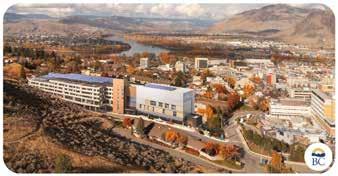
an interfaith sacred space for for patients, caregivers and staff to recuperate and recharge;
staff support, including offices and workstations; and
a 470-stall parkade.
The project also includes expansion and upgrades to Royal Inland’s community oncology clinic and pharmacy.
EllisDon Corporation has been selected to lead construction. Upgrades to the existing oncology clinic will continue, with work scheduled to finish at that site in 2029.
The new facility will be operated by BC Cancer in partnership with Interior Health. The estimated cost of the project is approximately $386 million, shared between the Province and the Thompson Regional Hospital District.
Royal Inland Hospital is one of two Interior Health tertiary referral hospitals, providing care for people in the Thompson-Cariboo-Shuswap region. It offers services including emergency care, surgeries, mental-health support, medical testing, cancer care and outpatient clinics.
The new BC Cancer centre is part of B.C.’s 10-Year Cancer Action Plan, which sets out immediate steps to improve prevention, detection and treatment of cancer.

ivrsf PfAuNzyÈn dI imlx-julx: lyKkF, spFsrF df afdr aqy klfkfr srdfr jrnYl isMG nUM smripq
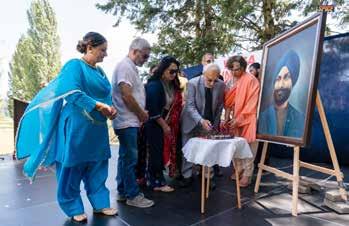


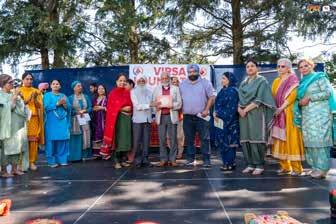
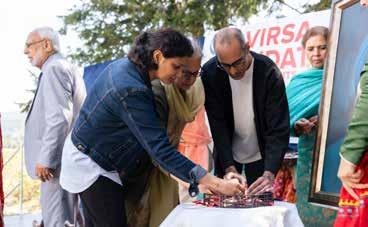

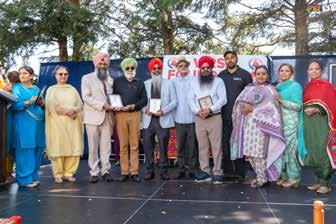




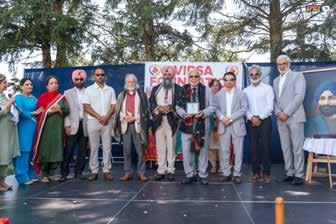


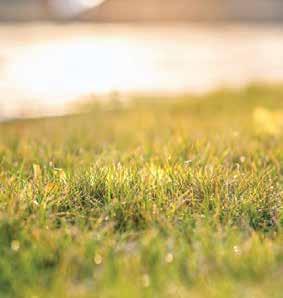
hux lfgU hn lfan nMU pfxI dyxf vrijq hY
bfg Puwl • ruwK • bUty • pOdy lgfAux vfly
aftomYitk pfxI iplfAuxf: iksy vI idn svyry 5 qoN 9 vjy dy ivckfr hwQIN pfxI dyxf: iksy vI smyN hwQIN jF qupkf/mfeIkRo sprya isMcfeI duafrf vDyry jfxkfrI leI skYn koz 'qy jfE:

ourwatermatters.ca
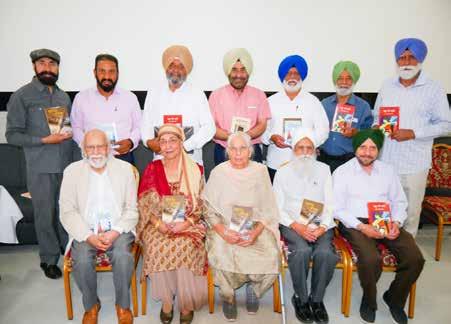
bIqy aYqvfr 27 julfeI 2025 Kflsf dIvfn susfietI ivKy pMj mYNbrI pRDfngI mMzl vloN
sBf dy ilKfrIaF dI sFJI pusqk “sLbdF dI sFJ” aqy pvn igwlF vflf df “qryVF” nfvl sRI aYNzI iswDU pMjfbI piqRkf vfly aqy

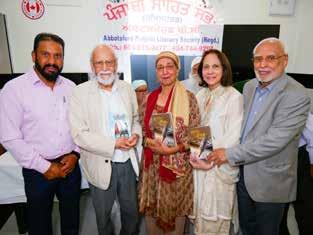
igwl, nvqyj BfrqI aqy pvn igwlF vflf sn.
sFJI pusqk dy 12 sfihqkfrF nUM snmfn rUp plykF dy ky smfgm ‘c BrpUr mfx kIqf. kvI drbfr ‘c mYNbrF ny afpo afpxIaF kivqfvF pVH ky rOxkF lfeIaF. surjIq klsI ny sBf dI jfxkfrI irport pVHI.
ajmyr rozy dy sihXog nfl pusqk lok arpx smfgm kIqf igaf.
pRDfngI mMzl ‘c sLfml suKivMdr isMG DflIvfl sInIar vfeIs
pRYjLIzYNt, suKdyv isMG brfV pRDfn, sInIar istIjLn jgqfr isMG
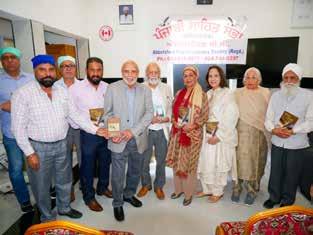
pMjfbI sfihq sBf aYbtsPorz vloN afpxI “mF bolI” pMjfbI pMjfbIaq leI iesy qrHF hI syvf jfrI rhygI.
qryVF nfvl Auqy mlivMdr iswDU vloN Byijaf prcf surjIq klsI ny pVH ky suxfieaf. gurduafrf Kflsf dIvfn susfietI vloN cfh pkOiVaF dI syvf inBfeI geI. smfgm ivc styj skwqr vjoN ipRMsIpl s[ jgrUp isMG igwl ny bfKUbI pysLkfrI kIqI.
mfisk irport : “bldyv suKI rozy” aqy sihXogI “surjIq awcrvfl”

Abbotsford School District
Expands Childcare Capacity with 226 New Licensed Spaces

The Abbotsford School District is excited to announce the opening of 226 new licensed childcare spaces this September—a major milestone in supporting families and young learners across the community.
Two brand-new childcare centres, both located on school grounds, will open their doors:
Auguston Traditional Elementary (operated by Creating Smiles Childcare Society) will offer:
12 infant spaces
16 spaces for children aged 3–5
54 spaces for before and after school care
Margaret Stenerson Elementary (operated by Fraser Valley Montessori Childcare) will provide:
8 infant spaces
16 toddler spaces
24 before and after school care spaces
These two purpose-built centres were made possible thanks to capital investments from the Ministry of Infrastructure.
“As more families settle in Abbotsford, we’re pleased to see new childcare options meeting the growing demand,” said Bowinn Ma, Minister of Infrastructure. “We understand how essential childcare is for families, and by collocating child care on school grounds we’re making the most use
syvf dI smrwQf vDfAuNdf hY

out of childfriendly spaces in communities and streamlining pick-ups and drop-offs for busy parents.”
In addition, before and after school care will be expanded at four elementary schools—John Maclure, Mountain, Aberdeen, and Jackson—adding 24 new spaces in partnership with Hand in Hand Childcare Society and Little Dreams Childcare.
“This is a proud moment for our district,” said Shirley Wilson, Chair of the Abbotsford Board of Education. “We are appreciative of the Ministry of Infrastructure for its significant investment in the new centres, and to our community partners and staff for their dedication to expanding childcare access.”
The Abbotsford School District continues to collaborate with schoolbased teams and local organizations to address waitlists for before and after school care. These additional spaces reflect a shared commitment to meeting the needs of families and strengthening early learning opportunities across the district.
Located in the heart of the Fraser Valley, the Abbotsford School District encompasses 46 schools attended by over 20,000 students. As the largest employer in the city, we are proud to have 3,000 full- and part-time employees dedicated to preparing students for a lifetime of success.
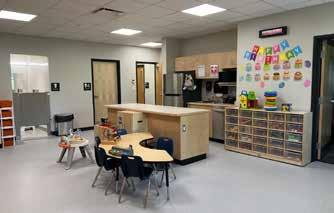
aYbtsPorz skUl iËlf ies sqMbr ivwc
226 nvyN lfeIsYNs pRfpq bwicaF dI dyKBfl sQfnF dI KuwlHx dI GoÈxf krn leI
Auqusfihq hY - jo smudfie dy pirvfrF aqy nOjvfn iswiKafrQIaF df smrQn krn ivwc iewk mhwqvpUrk mIl pwQr hY.
do nvyN bfl surwiKaf kyNdr, jo dovyN skUl dy aFdy qy siQq hn, afpxI drvfjy KolHxgy:
• afgsqon prMpirk pRfiemrI (jo isrjx vfly muskfn bflaiBafs smfj duafrf clfieaf jFdf hY) pRdfn krygf:
12 nOjvfnF dy sQfn
3–5 sfl dy bwicaF leI 16 sQfn
skUl qoN pihlF aqy bfad dy leI 54 sQfn
• mfrgryt stInrsn prfiemrI (jo PryËr vYlI moNtysorI bflaiBafs duafrf clfieaf jFdf hY) pRdfn krygf:
8 nOjvfnF dy sQfn
16 Coty bwicaF dy sQfn
skUl qoN pihlF aqy bfad dy leI 24 sQfn
ieh do Kfs qOr ‘qy bxfey gey kyNdr nvInqm
ZFcf mMqrI dIaF pUjI lgqF dy kfrn sMBv hoey sn.
“jdoN hor pirvfr aYbbtsPorz ivwc bws rhy hn, sfnUM KuÈI hY ik nvIaF bwicaF dI dyKBfl dy ivklp vD rhI mMg nUM pUrf kr rhIaF hn,” boivn mf, buinaF dI mMqrI ny ikhf. “asIN smJdy hF ik bwicaF dI dyKBfl pirvfrF leI ikMnI ËrUrI hY, aqy skUl dy mYdfnF ‘qy bwicaF dI dyKBfl nUM iewk sQfn
‘qy iekwTf krky asIN sfmfijk sQfnF df sB qoN vDIaf AupXog kr rhy hF aqy ibqIqy mfpy leI ipkap aqy zrOp-afP nUM afsfn bxf rhy hF.”
ies dy nfl, skUl qoN pihlF aqy bfad dI dyKBfl nUM cfr pRfiemrI skUlF—jOn mYklUr, mfAUNtyn, aYbrzn aqy jYksn— ivwc PYlfieaf jfvygf, ijs nfl hYNz ien hYNz cfeIEzkyar sosfietI aqy iltl zRImË cfeIlzkyar nfl BfeIcfry ivwc 24 nvyN sQfn joVy jfxgy.
“ieh sfzy iËly leI grB dI gwl hY,” ÈrlI ivlsn, aYbotsPorz borz afÌ aYjUkyÈn dI cyar, ny ikhf. “asIN nvyN kyNdrF ivwc afpxI mhwqvpUrn invyÈ leI ienÌrfstRkcr ivBfg dy pRqI afBfrI hF, aqy sfzy smudfiek sfQI aqy stfÌ dy AuqÈfhnF qy sMBfl pfs dy vDyry phuMc idMidaF leI.”
aYbbotsPorz skUl iËlHf skUl-afDfirq tImF aqy sQfnk sMsQfvF nfl jfrI rwKdf hY qF jo skUl qoN pihlF aqy bfad dy dyÈkrIaF leI vYtilstF nUM smfDfn kr sky. ieh aYwzIÈnl QfvF pirvfrF dIaF jrUrqF nUM pUrf krn aqy iËlHy dy dOrfn bfl-iswKx dy mOky nUM mËbUq krn leI sFJI bcnbMdI nUM asrkfr krdIaF hn.
PryËr vYlI dy idl ivwc siQq, aYbotsPorz skUl iËlHf 46 skUlF nUM afpxy ivwc Èfml krdf hY, ijnHF nUM 20,000 qoN vwD ividafrQI pVHn afAuNdy hn. Èihr ivwc sB qoN vwzy nOkrI dy AuwpBogqf dy qOr ‘qy, sfnUM hY ik sfzy kol 3,000 pUrf aqy awD smyN vfly krmcfrI hn jo ividafrQIaF nUM sPlqf BrI iËMdgI dy leI iqafr krn ivwc smripq hn.

srI: 23 julfeI nUM ieiqhfisk Auprflf kridaF srI istI kONsl vwloN istI hfl ivc gurU nfnk jhfË 111vIN vrygMZ mOky aYlfnnfmf jfrI kIqf igaf hY. ies mOky qy kONsl cYNbr dy Kcf-Kc Bry hfl kYnyzf dIaF do drjn qoN vwD sMsQfvF ny iewkjutqf ivKfAuNidaF ibRitÈ bsqIvfdI nfm kmfgftfmfrU dI QF guridq isMG jI aqy musfiPrF vwloN jhfj 66,000 zflr qy cfrtr krn mgroN rwKy gey ‘gurU nfnk jhfË’ nF nUM bhfl krn leI aihd ilaf. gurU nfnk jhfË hYrItyj susfietI vwloN pRogrfm dOrfn zf[ gurivMdr isMG ny gurU nfnk jhfË dy ieiqhfs bfry jfxkfrI sFJI kridaF sMgqF nUM jI afieaF afiKaf. gurU nfnk jhfË idhfVy vjoN ieiqhfisk mfnqf imlx ‘qy ies smfgm ivwc Dfrimk, ividak, smfijk aqy siBafcfrk jQybMdIaF ny byimsfl Auqsfh idKfieaf

pMjfb qoN BfeI bldIp isMG pRiswD sMgIqkfr aqy hirMdr isMG iswK ivdvfn, igafn isMG sMDU, pMjfb pfiksqfn qoN siqkfrq ÈKsIaq rfey ajIj Aulf Kfn gurU nfnk jhfË XfdgfrI idhfVy mOky phuMcy hoey sn. Kflsf skUl dI tIm ny gwqky dy jOhr idKfey. pRogrfm dI afrMBqf mUl invfsIaF ny BfvpUrq qrIky nfl kIqI ies mgroN kYnyzf df rfÈtrI gIq aqy Èbd gfien kIqy gey.

GURU Nanak Food Bank held the grand opening of its third location on Wednesday. The food bank is located in a mobile unit at the Kennedy Seniors’ Centre parking lot at 11760 88 Avenue in North Delta.
pilot project represents a proactive step in ensuring that no one in the community goes hungry while long term solutions are being explored.
srI istI dI myar myar birMzf lOk vwloN jfrI aYlfnnfmy nUM kONslr hYrI bYNs, mndIp isMG nfgrf ilMzf vloN ÈhId BfeI jssMq isMG KflVf dy puwqr jnmIq isMG KflVf nUM Byt kIqf, ijs dy pVdfdf BfeI hrnfm isMG KflVf gurU nfnk jhfË rfhIN kYnyzf phuMcy sn. ies aYlfnnfmy dy Auprfly ivwc BfeIcfry dI nfmvr ÈKsIaq s[ srbjIq isMG bYNs vwloN ivÈyÈ sihXog idwqf igaf.
ies mOky ‘qy sYnytr blqyj isMG iZwlo ny Èbd sFJy kridaF gurU nfnk jhfË dI aihmIaq bfry gwl kIqI. aYmpI suK DflIvfl, aYmpI gurbKÈ isMG sYxI, aYmaYleyj amInf Èfh, gYrI bYg,mndIp isMG DflIvfl,hrmn BMgU qy juzI qUr ny ivcfr sFJy kIqy.
smfgm ivwc hfËr sMsQfvF nUM gurU nfnk df jhfË XfdgfrI idhfVy ‘qy jfrI aYlfnnfmy Byt kIqy gey. XfdgfrI smfgm dy aKIr ivwc DMnvfd rfj isMG BMzfl vwloN kIqf igaf. pRbMDkF vwloN ieiqhfisk hvfilaF dI gwl kridaF, kYnyzf ivwc PYzrl pwDr dy mfPInfmy ivwc vI muwK nF gurU nfnk jhfË krky glqI dI suDfeI df sunyhf idwqf igaf. ieiqhfs glqIaF nUM drusq krn qy gurU nfnk jhfË nF dI bhflI vfsqy kIqI gey ies pRogrfm df sMcfln sfihb kOr vwloN kIqf igaf. pRogrfm dOrfn pMjfb qoN rfj sBf mYNbr sMq blbIr isMG sIcyvfl aqy akfl qKq dy kfrjkfrI jQydfr isMG sfihb kuldIp isMG gVgwj vloN 23 julfeI df idn pMjfb aqy Bfrq pwDr ‘qy gurU nfnk jhfj XfdgfrI idhfVf aYlfny jfx aqy ies sbMDI ieiqhfs dIaF ikqfbF drusq krn leI kIqy jf rhy AuprfilaF leI DMnvfd kIqf igaf.

aYbtsPorz (gur-
dIp isMG gryvfl)
vYnkUvr siQq
XUnIvristI afP
ibRitsL kolMbIaf ivKy iswiKaf
lY rhIaF ividafrQxF dI hfkI
tIm QMzrbrzjL
dI qyjL qrfr pMjfbx hfkI iKzfrn cMnrIq kOr
bfsI pRoPYsLnl ivmYn hfkI lIg ‘c
KyzygI. cMnrIq kOr bfsI pihlI pMjfbx qy BfrqI
hI nhIN sgoN pihlI dwKxI eysLIafeI hfkI iKzfrn hY ijhVI pRoPYsLnl ivmYn hfkI lIg vfsqy cuxI geI hY. ies qoN ielfvf lIg ‘c Kyzx vflI Auh
XUnIvristI afP ibRitsL kolMbIaf dI pihlI
ividafrQx iKzfrn hY. ies hfkI lIg ivc
3 tImF kYnyzf qy iqMn tImF amrIkf dIaF hn.
ibRitsL kolMbIaf dy lyk kMtrI sLihr dI jMmpl
cMnrIq ny 4 sfl dI Aumr ivc hfkI KyzxI sLurU kr idwqI sI qy Auh Pfrvrz pujIsLn ‘qy hfkI
KyzdI hY. 5 Puwt 7 ieMc lMmI cMnrIq kYnyzf vYst hfkI tIm dI afl stfr iKzfrn rih cuwkI hY.
bOb ihMzmfrc lIzrisLp avfrz jyqU cMnrIq XU
bI sI ivKy afrts dI pVHfeI kr rhI hY.
This new location is part of a pilot project approved by the city of Delta, enabling Guru Nanak Food Bank to continue serving North Delta residents from a temporary trailer-based facility. This initiative follows the city ‘s commitment to support community-driven solutions to food insecurity and comes at a crucial time as the organization is required to vacate its current North Delta location at 11188 84 Avenue due to site development.
Guru Nanak Food Bank currently serves more than 20,000 recipients monthly, including over 4700 residents in Delta. This
aYbtsPorz (gurdIp isMG gryvfl) kYnyzf dI pRmuwK kusLqI sMsQf rYsilMg kYnyzf lUty aqy kYnyzIan AulMipk kmytI vloN pYrfgUey dI rfjDfnI asnikEn ivKy ho rhy pYn amrIkn jUnIar 2025 aMqr rfsLtrI kusLqI mukfbilaF ivc ihwsf lYx vfly pihlvfnF dI tIm df aYlfn kr idwqf hY. 53 iklo vrg qoN 125 iklo vrg dy pihlvfnF dI kYnyzf dI tIm ivc aYbtsPorz dy jMmpl pihlvfn 20 sflf jLorfvr isMG ZINzsf nUM vI sLfml kIqf igaf hY. brnbI mfAUNtyn rYsilMg klwb df 6 Puwt 4 ieMc lMmf pihlvfn jLorfvr isMG ZINzsf kYnyzIan tIm df ieko iek pMjfbI pihlvfn hY ijhVf pYrfgUey dI DrqI qy
125 iklo vrg PrI stfeIl kusLqI mukfbly ‘c
afpxI kusLqI dy jOhr idKfeygf. 9 qoN 23 agsq
Delta Mayor George V. Harvie flanked by Narinder Singh, President of Surrey’s Gurudwara Dukh Nivaran Sahib and Neeraj Walia, GNFB Secetary.
Effective immigiately, opening days for both Delta locations have been updated: New Kennedy location (11760 88 Avenue) : Open for recipients on Wednesday, Thursday and Friday from 1 pm to 6 pm. Existing location (11188 84 Avenue) : Will serve recipients on Saturday and Sunday 11 am to 6 pm and Monday from 1 pm to 6 pm.
‘c kusLqI Kyzygf


Abbotsford voters will head to the polls on Saturday, October 11 to elect a new school trustee for the Abbotsford Board of Education.
The byelection was triggered by the recently passed Eligibility to Hold Public Office Act, which disqualifies Members of the Legislative Assembly (MLAs) from also holding municipal or school board positions. The law came into effect on May 27, prompting the resignation of former trustee Korky Neufeld, who was elected MLA for Abbotsford West last fall.
Prospective candidates can begin submitting nomination papers from August 26 to September 5, with information and forms available at Ab-



botsford City Hall (32315 South Fraser Way) starting August 12.
To be eligible, candidates must be Canadian citizens, at least 18 years old by election day, have resided in British Columbia for at least six months, and not be disqualified from voting in provincial elections.
Some local critics have expressed concern about the financial impact of such mid-term elections. Similar situations in recent years have cost the city more than $300,000 per byelection.
The successful candidate will serve the remainder of the current term, which ends with the next municipal election on October 26, 2026.


aYbtsPorz
skUl borz dy
iewk trwstI
vfsqy AuWp cox
11 akqUbr idn sLinwcrvfr
nUM hovygI. ieh
AuWp cox lMmf
smF skUl borz
dy trwstI rhy

korkI inAUPYlz akqUbr 2024 ivwc hoeIaF ibRitsL kolMbIaf ivDfn sBf coxF ivwc
aYbtsPorz pwCmIN ivDfn sBf hlky qoN
pihlI vfr ivDfiek cuxy gey sn. ies AuWp
cox vfsqy 12 agsq qoN aYbtsPorz istI hfl qoN nOmInysLn Pfrm ley jf skdy hn.

AumIdvfr dI Gwto Gwt Aumr 18 sfl hoxI jLrUrI hY qy Auh 6b mhIny qoN ibRitsL kolMbIaf df nfgirk hoxf jLrUrI hY.










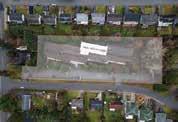


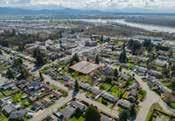







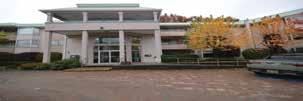



Canada’s new government has a mandate to build a strong economy by attracting the best talent in the world and filling key labour shortages.
Today, the Honourable Lena Metlege Diab, Minister of Immigration, Refugees and Citizenship, announced more than $3.2 billion over three years across more than 520 organizations outside Quebec to improve the integration of newcomers, including into the job market, and to reduce labour shortages.
Settlement services are essential to filling vacancies in high-demand sectors such as health care and skilled trades. With increased economic integration, newcomers can apply their skills quickly, fill critical labour gaps and boost productivity.
Funding will be provided to local organizations to deliver tailored services
that recognize regional considerations and needs, instead of applying a onesize-fits-all approach. Services will include
support with getting a licence or certification in a regulated profession providing job-specific and general language training in English and French supporting French-speaking newcomers to integrate into Francophone communities outside Quebec
These services will help newcomers build successful lives in Canada by supporting their economic, social and cultural integration into communities across the country.
With an outcome-focused approach, Canada will attract a strong workforce and build one unified Canadian economy—the strongest economy in the G7.
Quote:
“Canada is focused on building more homes, better infrastructure and a clean economy—and newcomers are essential to making that happen. This investment is about giving newcomers the skills and opportunities they need to build their lives here and help build Canada at the same time. When newcomers thrive, our communities grow stronger, and we all move forward together.”
– The Honourable Lena Metlege Diab, Minister of Immigration, Refugees and Citizenship
Quick facts:
As of April 1, 2025, more than 520 organizations received funding to deliver settlement and resettlement programs and services across Canada.
Organizations were chosen following a competitive national call for proposals. All applications were carefully reviewed to confirm they met eligibility requirements, were aligned with program priorities, provided good value for money and offered services that met newcomer needs.
Under the Canada–Quebec Accord, the Government of Canada provides the province of Quebec with an annual grant for the delivery and administration of reception services and of services to support the linguistic, cultural and economic integration of immigrants who settle in that province, including resettled refugees.
From April 2014 to January 2025, 47% of all permanent residents outside Quebec and 93% of resettled refugees accessed at least one IRCC-funded settlement service in Canada.








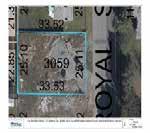

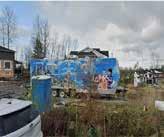






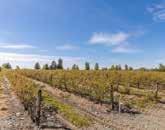




As the B.C. Day long weekend approaches, people are encouraged to stay informed about wildfire conditions, be prepared and plan travel.
Warming summer temperatures and ongoing drought mean much of British Columbia is at heightened risk of wildfire, even after recent cooler temperatures and rain. Environment and Climate Change Canada (ECCC) has forecast hot temperatures this week in B.C., with heat warnings currently in place for parts of the province. People are encouraged to prepare for hot summer weather.
To access the Province’s PreparedBC extreme-heat preparedness guide, visit: https://www2.gov.bc.ca/gov/content/safety/emergency-management/preparedbc/ know-your-hazards/severe-weather/ extreme-heat.
The province continues to face extended dry conditions and below-average rainfall in many areas, putting a strain on water supplies and raising wildfire concerns. Everyone is encouraged to use water wisely and follow local watering restrictions.
Open burning, including Category 2 and Category 3 fires, is now prohibited or restricted in many areas. Campfires (Category 1) are banned in the Coastal Fire Centre, excluding Haida Gwaii. People
should check local restrictions before burning and, in areas where campfires are permitted, follow safe practices. Avoid having a campfire when it’s windy, choose a proper fire pit or make a ring of rocks at least three metres from trees, shrubs, structures and debris. Do not leave a campfire unattended for any time.
Reporting new fires promptly is crucial. Approximately 40% of new fires are reported by the public. To report a wildfire, unattended campfire or open-burning breach, call 1 800 663-5555 (toll-free) or dial *5555 on a cellphone. You can also use the B.C. Wildfire Service mobile app to submit photos and location details, and to check up-to-date wildfire maps, road alerts and weather forecasts.
Summer brings higher fire risk. Protect your home by checking that your homeowner or tenant insurance includes wildfire coverage. Call your insurance representative to discuss your coverage or contact the Insurance Bureau of Canada at 1 844 227-5422.
You can reduce risk around your property with these FireSmart tips: clear dry leaves and debris from around your property; move propane tanks and other flammables at least 10 metres from structures;
Rural and remote communities, First Nations and not-for-profit organizations can submit applications to fund projects that strengthen and diversify their economies.
This is through the Rural Economic Diversification and Infrastructure Program (REDIP). The fourth intake opened on Thursday, July 24, 2025, and runs until Oct. 31, 2025.
In its first three years, REDIP will have invested as much as $142 million in more than 450 projects throughout B.C. that will create an estimated 7,000 jobs in rural areas. These projects promote economic diversification, resilience, clean-economy opportunities and infrastructure development.
Communities can receive funding through four streams:
capacity – helps communities build internal capacity for economic development by providing up to $50,000 per year for up to three years and ac-
cess to development funding of up to $100,000 to launch priority projects;
development – supports business planning, feasibility assessments and other developmental steps for business and economic diversification opportunities in rural B.C., up to $100,000;
implementation - supports the development of new economic infrastructure and the implementation of economic services, programming or operations directly related to diversification in rural communities, up to $1 million; and community transition – supports communities experiencing a major economic change resulting from the loss of a major employer or linked to major projects in the province.
Business BCeIDs are now required as part of the REDIP application process. As BCeID account registration can take several weeks, applicants are encouraged to register early at: https:// www.bceid.ca/
keep grass short; close doors and windows; water trees and shrubs when local restrictions allow; and choose more fire-resistant plants for your landscaping.
In addition to FireSmart activities, people are encouraged to have grab-and-go bags and an emergency plan that is shared with friends and family. Find a recommended grab-and-go bag list and template emergency plans at https:// www2.gov.bc.ca/gov/content/safety/ emergency-management/preparedbc. Creating an Emergency Support Services profile online before an evacuation order is issued will save time and help you receive assistance more quickly, should an evacuation occur.

taking the essentials. Find tools and checklists at https://www.adventuresmart.ca/.
As of Tuesday, July 29, 2025, there are 62 active wildfires burning in B.C. Of these fires, five are considered out-of-control. Staying aware of the latest conditions, respecting all fire bans, and reporting hazards without delay will help protect communities this long weekend.
If you’re going into the backcountry, plan carefully and pack the essentials. Follow the Three Ts: trip planning, training and
People enjoying B.C.’s beautiful waters can stay safe by wearing life-jackets, avoiding boating or swimming while intoxicated, and carrying a first-aid kit. During warmer months, some beaches may be subject to advisories for elevated bacteria levels or blue-green algae blooms, which can be harmful to people and pets. If you see an advisory, avoid swimming and keep pets out of the water.
Once your long weekend plans are set, check https://www.drivebc.ca/ for current road conditions. Roads can be busier than normal around holidays, so be patient and allow extra time for your trip. To ensure a safe trip, ensure all travellers wear seatbelts, check weather forecasts, obey speed limits and watch for motorbikes and cyclists.
Recreational freshwater anglers will soon be able to buy B.C. freshwater fishing licences through the Wildlife Information and Licensing Data system (WILD), bringing fishing and hunting licensing into one convenient online platform.
Starting in fall 2025, people who are not already registered in the WILD system can create a profile and obtain a free Fish and Wildlife ID (FWID) in preparation for the 2026–27 licence year. An FWID will be needed to purchase a freshwater fishing licence when sales open in WILD in spring 2026.
Currently, people access WILD using a Basic BCeID. This fall, B.C. residents and people who reside in Canada outside of B.C. will also have the option to log in using their BC Services Card account. This secure and convenient new method automates identity and residency verification, helping reduce administrative workload, reduce wait times and enhance the user experience. People who do not reside in
Canada will need to use or create a Basic BCeID to access and obtain an FWID online in WILD.
Since its launch in 2016, WILD has improved public access to hunting applications and authorizations and helped government process applications faster. Over the past five years, roughly 93% of all limited entry hunting applications and 30% of all hunting licences were purchased online through WILD.
B.C. is home to some of the world’s most renowned freshwater fishing destinations, attracting residents and visitors alike. Recreational fishing also supports local economies, particularly in rural and tourism-dependent communities.
Expanding WILD to include freshwater fishing licence sales will further streamline the licensing process for stakeholders and government, improve data collection, and support informed decision-making for fish and wildlife management.
hox vDfeIaF
ajYb isMG ilwdV
604 825 3131
hox vDfeIaF sfzy vwloN dohF pirvfrF nUM
afp dI ikrpf hoeI qF rwiKaf kfrj dfqf jI
afnMd kfrj leI juV ky bYTy qyry crnF ivwc dfqf jI
hox vDfeIaF sfzy vwloN dohF pirvfrF nUM

KuÈIaF df mOkf hY ivwc dohF pirvfrF jI
qyrf afsrf qwk ky Diraf ivafh awj bfbf jI
irÈqydfr aqy sfk sbMDI cwl afey dr qyry nUM
hox vDfeIaF sfzy vwloN dohF pirvfrF nUM
imhr df hwQ isr qy rwKI nvIN ivafhI joVI dy
iËMdgI dy ivwc KuÈIaF bÉÈI dr qoN mMgdy qyry ny
inafVy vfly ny iliKaf ZfzI KuÈIaF nfl gfAuNdy ny
hox vDfeIaF sfzy vwloN dohF pirvfrF nUM
hoeIaF BuwlF bKÈ idAu qusIN bKCx hfry ho afpxy crnF nfl lf ky rwiKE ajYb inmfxy nUM
krky afpxI myhr qF bKÈo KuÈI inmfixaF nUM
hox vDfeIaF sfzy vwloN dohF pirvfrF nUM
hox vDfeIaF sfzy vwloN dohF pirvfrF nUM

BYxo vIro kro iqafrI byrI sIjn afieaf
mulK rfj bjfj “pRymI” golyvflf
ipCly sfl keIaF qoV ky byrI, ieMzIaf gyVy lfey
mihMgf huMdf isAunf dyK, jyvr nvyN bxfey
muMzy kuVIaF ivafhy jf ky PrjL afpxf lfihaf
BYxo vIro kro iqafrI byrI sIjn afieaf
keI ipMz ‘c pfT rKfAuNdy, puMn dfn hn krdy keI krfAuNdy KyzF jf ky, vfh vfh ipMz dI Kwtdy
grIb kuVIaF df ivafh rcf ky, jwg ‘c nfm bxfieaf
BYxo vIro kro iqafrI byrI sIjn afieaf
sfl Br dI kIqI imhnq, iksfn Psl AuzIkI jFdy
Kfd, dvfeI spry krky, PslF isry lgfAuNdy
loV ipwkrF dI kfsLqkfrF, pyprF ivc kZfieaf
BYxo vIro kro iqafrI byrI sIjn afieaf
ijs ny jfxf qoVn byrI, pihlF ryt mkf lO
jykr jfxf kfr qy iswDy, gyVf Kyq lgf lO krnf ijMnHF kMm kYnrI, irjLmf AunHF mMgfieaf
BYxo vIro kro iqafrI byrI sIjn afieaf
Gfty vflf sOdf KyqI, ijLMmIdfr hux kihMdf spry, dvfeI Krcy vD gey, mOsm TIk nf rihMdf pUrf muwl nf imly iksfnF, sbiszI jLor lgfieaf
BYxo vIro kro iqafrI byrI sIjn afieaf
knyzf vrgf mulk nf koeI, dunIaF sfrI kihMdI bI sI sUbf sB qoN vDIaf, qot koeI nf rihMdI
vDIaf ryt, lybr Gwt “pRymI” qoVn df mn bxfieaf
BYxo vIro kro iqafrI byrI sIjn afieaf
nf kr myrI myrI bMidaf, Cwz jfxf sMsfr
mulK rfj bjfj
“pRymI” golyvflf
mfqf ipqf, puwqr DIaF, irsLqy bx ky afey, lYxf dyxf krky pUrf, tfeIm qy cfly pfey, iekwlf afvy, iekwlf jfvy, JUTf ieWQy ipafr. nf kr myrI myrI bMidaf, Cwz jfxf sMsfr.
pYsy dI ieQy dOV lwgI, mqlb kwZy dunIaF, pYsf hovy qF hr koeI nyVy, Bys vtfAuNdI dunIaF, irsLqy nfqy tuwtdy dyKy, vfps mMigaf jdoN AuDfr. nf kr myrI myrI bMidaf, Cwz jfxf sMsfr.
puwqr ipAu nUM mfrI jFdf, pqnI koeI sfVI jFdf, Brf Brf df vYrI bixaf, hwk vIr df KfeI jFdf, ivc kuwK dy jMmdI DI nUM, pfpI dyNdy mfr. nf kr myrI myrI bMidaf, Cwz jfxf sMsfr.
kOry rfjf luwt KjLfny, lwKF gMj bxfey, igafn hoieaf Bry KjLfny, grIbF nUM lutfey, rfjf iskMdr pysL nf geI, jFdf roieaf BuwbF mfr. nf kr myrI myrI bMidaf, Cwz jfxf sMsfr.
nfnk, goibMd, Bgq, PkIr, qfrn dunIaF afey, kOzy rfksL, swjx Twg keI iswDy rsqy pfey, cMgy mfVy kMm df lyKf, Bugqx leI ho iqafr. nf kr myrI myrI bMidaf, Cwz jfxf sMsfr.
dfxf pfxI iKwc ilafAuNdf, bhfny nfl pucf vy, bhfnf koeI bxf ky AuWQy, Aus qoN krjL cukf vy, Bjn ismrn kr ‘pRymI’, JUTf Cwz ipafr. nf kr myrI myrI bMidaf, Cwz jfxf sMsfr

sfvx mhIny ivc hr iek rfsLI leI sLuB asLuB Pl :
myK : mnobl kmjLor rhy. Dn sQfn ivc sLuwkr afriQk siQqI mjLbUq kry. imwqr-bMDU suK, sMpqI lfB, sMqfn pwKoN icMqf, mn asLFq, kfrobfr gVbV. julfeI 16,17,24,25,26 , agsq 3,4,12,13 asLuB.
ibRK : ishq TIk, afriQk siQqI kmjLor, bMDU suK, KUn ivc KrfbI, vfXU rog, sMqfn pwK sLuB, gupq sLwqrU qoN sfvDfn, iesqrI ksLt. julfeI 18,19,27,28, agsq 5,6,7,14,15 asLuB.
imQun : ishq TIk, afmdn Krc brfbr, imwqr-bMDU suK, Dn hfnI, pRfkrm vDy, sMqfn pwK sLuB, sLwqrU kmjLor, iesqrI pwK qoN lfB. julfeI 20,21,29,30, agsq 8,9 asLuB.
krk : ishq TIk,pirvfrk JgVy, mfnisk ksLt, iesqrI pwK qoN lfB, imwqr-bMDU sihXog, nyqr ksLt, sMqfn suK, sMpqI lfB, acfnk Krcf. julfeI 22,23,31, agsq 1,2,10,11 asLuB.
isMG : kRoD vDy, mfnisk ksLt, Dn lfB ho ky nuksfn, GrylU JgVy sulJxgy, sMqfn pwK hfnI, sMpqI hfnI, iesqrI ksLt, sLnI-mMgl df dfn kro. julfeI 16,17,24,25,26, agsq 3,4,12,13 asLuB.
kMinaf :ishq TIk pRMqU mfnisk ksLt rhy. afmdn Krc brfbr, nyqr ksLt,Brf nUM ksLt, sMpqI suK, sMqfn dI icMqf, iesqrI suK. julfeI 18,19, 27,28, agsq 5,6,7,14,15 asLuB.
qulf :ishq TIk, mn pRysLfn, afriQk lfB, imwqr bMDUaF qoN suK, sMpqI lfB, sMqfn dI icMqf, iesqrI suK,rog zr. julfeI 20,21,29,30, agsq 8,9 asLuB.
ibRsLick : pyt dI KrfbI, Dn lfB, pirvfrk suK, kfrobfr TIk, BrfvF df suK, sMqfn icMqf, sLwqrU aqy rog df zr, iesqrI pwK sLuB. julfeI 22,23,31, agsq 1,2,10,11 asLuB.
Dn : ishq TIk, Dn lfB ho ky vI hfnI, bMDU ksLt, sMpqI df lfB, sMqfn icMqf, sLwqrU kmjLor, kfrobfr ivc hfnI. julfeI 16,17,24,25,26, agsq 3,4,12,13 asLuB.
mkr :, mfnisk aqy srIrk ksLt, sLnI-mMgl df dfn kro. rfj drbfr qoN zr, imwqr bMDU qoN pRysLfnI, iesqrI qy sMqfn suK, kfrobfr TIk, julfeI 18,19,27,28, agsq 5,6,7,14,15 asLuB.
kuMB : ishq ivc gVbV, iesqrI ksLt, mfnisk pRysLfnI, bMDU suK, Dn lfB, sMpqI suK, sMqfn qoN KusLI, kfrobfr ivc lfB. julfeI 20,21,29,30, agsq 8,9 asLuB.
mIn : ishq TIk, rog aqy sLwqrU zr, Dn hfnI, sMpqI lfB, sMqfn pwK sLuB, iesqrI pwK TIk rhy. julfeI 22,23,31, agsq 1,2,10,11 asLuB.
not : joiqsL rfsLI qy agly BivwK qy gRih cfl puwCx leI 604-751-0220 qy sMprk kro.

Any hectic activity that has just started to You are in a good position to make some final decisions on something you may have first considered late July to mid August. The position of somebody else may be clearer now, particularly if they decide to bring something to an end. If this does happen it can make it easier in some way when it comes to normal routines in life.


Whatever you had to rethink when it comes to putting things in place since mid August will now allow you to be clear of mind to late September when it comes to something that might have been first discussed late July to mid August. You can now make decisions that please you. Don’t be tempted to spend too much though.

Someone else can be very straightforward as to what they either like or expect from you. Be careful you don’t read into this more than is being offered, particularly if there is an expectation for you to take on responsibilities or to put things in place. Make decisions up to late September that will keep you in control of your finances.

Whatever financial decisions you may have first considered from late July to mid August can now be looked at more thoroughly, especially in relation to the best actions to take to be able to move forward. You need to be able to satisfy your own priorities, which may not necessarily fit in with the expectations of somebody else.


You are in an excellent position to be able to make decisions to late September that will take your life forward. You can feel as though you have greater personal choice or some control at last. There might be a second stage to this from January to April next year and for this reason it could be wise to ensure there is some flexibility.
Focus on anything you are determined to develop more for your own independence in the future. You can realise that contemplation alone will not move things forward. From now to early September you need to look at the commitments that would need to be taken on. Doing this in stages will help you to get used to the changes.

You are in a good position to come to realisations regarding any situations where you might feel as though you are taking on more than is reasonable on a regular basis. This is more about making decisions to bring matters to an end where commitments attached will have an inhibiting effect on possible future accomplishments.

Having absolute confidence about how you stand on any matter will engender respect from others, even though they may not fully agree with you. This could result in clarity when it comes to commitment and support, which may have been an issue from late July to mid August and was left hanging. Be mindful of the obligations you take on.

You could come to the realisation, from now to late September, that it is better to scale down ideas you might have had late July to mid August to be able to take these things into the future successfully. Others might have bigger ambitions but you can be happier with small steps, allowing you to have a feeling of better control.

You are in a position to late September to contemplate future plans and possibilities that you may have wanted from late July to mid August but could not finalise. You have the opportunity to engage with others and get a response. This could also have a lot to do with leaving the past behind up to 20th November so you can move on with a new life direction.

Something you thought had become evident since mid August where someone else’s decision making is concerned could again become more unknown to late September. It could be that they need to withdraw to make final decisions. These could involve taking your priorities into account as well as generating some sort of pleasure in life.
Something that wasn’t made perfectly clear or finalised by somebody else between late July and mid August can now return to late September where final decisions need to be made by them. It can be up to you to ensure they do not avoid responsibilities that could leave you with too much to get properly organised or put into place.



Farming has always been about experimenting and improving on techniques and yields year after year. Here are just three examples of advancements helping farmers protect our food security:
Glass houses. Greenhouses are an old innovation—create an insulated space that lets in sunlight and traps heat to keep plants warm. But farmers have been tinkering and improving on basic designs.
They’ve hit on supplementing sunlight with a combo of artificial lights to encourage crop growth. For instance, tomatoes and cucumbers love LED, while lettuces tend to respond to sodium lighting. More greenhouses are also using diffusing glass in their ceilings, which spreads out direct sunlight to ensure all the plants get equal exposure. This tech, along with other advances, has put fruit and veggie production in controlled environments like greenhouses five times higher than it was in 2000.
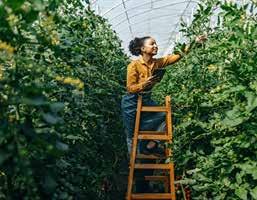
Digital farming. More farmers are taking advantage of modern technology to help boost their yields. Sensors out in the fields can feed to central dashboards where growers can get real-time information on the status of their crops to make more informed decisions on things like irrigation and pest control.
Some farms are incorporating AIpowered systems that can analyze the sensor data to think ahead and help time planting and harvesting, or even manage their storage’s environmental settings reactively to avoid spoilage.




$17.85/hour + possible bonuses. Piece rate if applicable. Duties include weeding, tying, pruning, harvesting, digging,Fertilizing and spraying crops and other farm related duties, in all weather conditions.
Like any business, farms benefit from a data-driven approach to making their decisions.
Planting for the next market trend. Farmers don’t just think ahead to the next season’s crop. They also take into account what new demands may be coming over the horizon. It’s why more farmers are planting crops that can meet the growing appetite for plant protein, such as soybeans or lentils.
Another interesting growth area in farming is biofuel. For instance, some Saskatchewan farms are producing native, fast-growing willow and poplar
trees that can help heat greenhouses up north with less net carbon than fossil fuels. Another potential biofuel is Camelina, a seed related to mustard and Canola that also helps prevent soil erosion and gives spring pollinators a much-needed food supply early in the year.
Through experience, know-how and a willingness to keep innovating and planning for the future, farmers manage their risk, grow their business and keep Canada’s agriculture on the cutting edge.
Learn more at rbc.com/agriculture.

Warm weather means backyard barbecues and hosting on your patio or terrace. And while a juicy hamburger and chicken skewers are seasonal staples, it’s important to make sure to follow food safety precautions to keep yourself, your family and your guests healthy. Here are some tips to keep in mind:

Shop carefully. Raw meat may contain harmful bacteria, so it’s important to keep it separated from other grocery items—by using separate bags, for instance—to avoid cross-contamination. Always refrigerate perishable foods as soon as possible, or within one to two hours, especially in warm weather. For longer transport times, consider bringing along an insulated cooler with frozen ice packs to hold your perishables.
Master your marinade. Marinate meat in the refrigerator, not on the counter. If you want to save some marinade to baste cooked meat or use as a dipping sauce, make sure to set some aside in the fridge before you use it on raw meat.
Transport wisely. Bringing food to the park or beach for a cookout? If you’re storing your meat in a cooler before barbecuing, make sure that the cooler is kept cold with frozen ice packs. Keep the cooler out of direct sunlight and avoid opening it too often, because that lets the cold air out and warm air in. If you can, bring a separate drink cooler since it will be opened often.
Prep separately. Use separate cutting boards, knives, tongs and dishes when handling raw and cooked meats. For example, don’t place cooked meat on the same plate used to bring the raw meat to the barbecue. Raw juices can spread bacteria to your safely cooked food and make you or the other diners sick.
Use a digital food thermometer when cooking. Bacteria such as E. coli, Salmonella and Listeria are killed by heat. Colour isn’t a reliable indicator that meat is safe to eat, so cook food to the proper temperatures and check by using a digital food thermometer to be sure.
To check the temperature of barbecued meat, take it off the grill and place on a clean plate. Insert the thermometer through the thickest part of the meat. For hamburgers, insert the thermometer through the side of the patty, all the way to the middle. Make sure to check each piece of meat or patty because a grill’s heat can be uneven.
You can find more tips, as well as the full safe cooking temperature guide, at canada.ca/foodsafety.
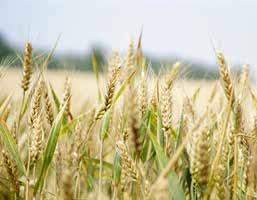
Businesses across every industry are taking a longer-term view of how they operate. Sustainability has become a bit of a buzzword for large businesses, but for farmers it’s always been an essential consideration. Avoiding soil fatigue and erosion, minimizing water use and producing more with less takes a willingness to innovate that’s always been a key asset of Canadian farmers.
Farms are getting smarter. Farmers are embracing the newest technology to help them produce larger yields with fewer resources. Some are AI-powering their strategic planning, using data models to better set out planting, watering, pest control and harvesting schedules.
The data for those platforms comes in via sensors placed out in the field, on equipment or in buildings, that also let farmers monitor conditions across their business in real time and react more efficiently to problems as they come up.
New crops are fueling farm sustainability. Crop development has al -
ways been an important aspect of Canada’s farm industry—Canola was a Canadian invention that took careful breeding and a scientific approach. That tradition continues with new crops serving as biofuels, helping the agriculture sector, and industry at large, reduce its dependence on fossil fuels.
Farmers are reaping the benefits of strategic planning. More farmers are taking a strategic approach to managing their business, from their seed stock to their balance sheets. For instance, scenario planning can help a farm better weather storms, flooding or drought.
“Many farmers are taking advantage of resources geared to their businesses through available partnerships,” says Lorna McKercher, national director, agriculture at RBC. “They’re reaching out to get risk management advice and financing options that can help their farms operate for generations to come.”
By taking a strategic, forward-thinking approach, farmers are helping ensure their businesses—and the food they produce—are sustainable and available for Canadians in the long term.

ieh Aumr bwicaF dI soc qy ivakqIgq ivkfs
dI huMdI hY, ijwQy shI mfrgdrÈn AunHF nUM iek
cMgf iensfn qy iËMmyvfr nfgirk bxn ivc mdd krdf hY. afE jfxIey kuJ aihm gwlF jo mfipaF nUM afpxy bwicaF nUM 13 sfl dI Aumr qoN pihlF ËrUr isKfAuxIaF cfhIdIaF hn:
bcpn Auh nINh hY ijs ‘qy BivwK dI iemfrq KVHI
huMdI hY. aijhy ‘c hr mfqf-ipqf leI ieh ËrUrI hY ik Auh afpxy bwicaF nUM jIvn dy mhwqvpUrn muwlF qy afdqF isKfAux, Kfs krky 13 sfl dI Aumr qoN pihlF.
ieh Aumr bwicaF dI soc qy ivakqIgq ivkfs
dI huMdI hY, ijwQy shI mfrgdrÈn AunHF nUM iek cMgf iensfn qy iËMmyvfr nfgirk bxn ivc mdd krdf hY. afE jfxIey kuJ aihm gwlF jo mfipaF nUM afpxy bwicaF nUM 13 sfl dI Aumr qoN pihlF ËrUr isKfAuxIaF cfhIdIaF hn: iemfndfrI qy nYiqkqf
bwicaF nUM isKfE ik swc bolxf qy shI kMm krnf ËrUrI hY, BfvyN siQqI koeI vI hovy. nYiqkqf aqy
iemfndfrI AunHF dy ikrdfr nUM mËbUq bxfAuNdI hY.
afqm-inrBrqf qy iËMmyvfrI
AunHF nUM CotIaF-CotIaF iËMmyvfrIaF idAu, ijvyN ik afpxIaF cIËF sMBflxf, smyN ‘qy homvrk krnf, ijs nfl Auh afqm-inrBr bxngy qy
iËMmyvfrIaF nUM smJxgy.
pYsy dI shI vrqoN
bwicaF nUM pYsy dI kImq smJfE. AunHF nUM pfkyt mnI dyxf aqy bcq krn dI afdq pYdf krnf
BivwK ivc AunHF nUM ivwqI smJdfr bxfeygf.
ishqmMd afdqF qy sfÌ-sPfeI
afpxy bwicaF ‘c ishqmMd Kurfk lYx, roËfnf ksrq krn aqy sfÌ-sPfeI dIaF afdqF ÈurU qoN hI pfE. ieh AunHF dy srIrk qy mfnisk ishq leI ËrUrI hY.
BfvnfvF dI kdr qy hmdrdI
dUijaF dIaF BfvnfvF nUM smJxf qy AunHF pRqI hmdrdI rwKxf bwicaF nUM idaflU qy sMvydnÈIl
bxfAuNdf hY. AunHF nUM dUijaF dI mdd krn dI iswiKaf idAu.
smyN dI mYnyjmYNt
smyN dI kImq isKfE qy iek rUtIn bxfAux dI afdq pYdf kro. ies nfl Auh smyN df shI AupXog krnf iswKxgy qy iËMmyvfr bxngy.
“nf” kihx dI smJ
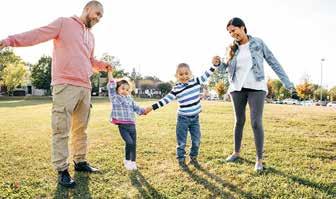
AunHF nUM isKfE ik jdoN vI Auh iksy glq cIË jF dbfa ‘c afAux qF “nf” kih skx. ieh afqm-surwiKaf aqy afqm-snmfn leI byhwd ËrUrI hY.
asPlqf qoN iswKxf
AunHF nUM ieh smJfE ik asPlqf df mqlb hfr nhIN, sgoN iswKx df iek hor mOkf huMdf hY. ies nfl Auh muÈklF df sfhmxf krn leI mfnisk qOr ‘qy mËbUq bxngy.
afqm-surwiKaf qy sfvDfnI
bwicaF nUM afpxI surwiKaf bfry jfgrUk kro, cfhy Auh sfeIbr surwiKaf hovy, sVk surwiKaf hovy jF inwjI surwiKaf. AunHF nUM isKfE ik axjfx lokF ‘qy jldI Brosf nf krn.
DMnvfd qy inmrqf
bwicaF ‘c afBfr pRgtfAux dI afdq pYdf kro qy isKfE ik inmrqf sB qoN vwzI qfkq huMdI hY. dUijaF pRqI afdr aqy aBfr jqfAux nfl Auh cMgy iensfn bxdy hn.
df iËafdf pRYÈr bx skdf hY brnafAut dI vjHf, bcfa ivc kMm afAuxgy
ieh 8 itps
Burnout nf isrÌ mfnisk ishq ‘qy asr pfAuNdf hY, sgoN ieh srIrk ishq, pRozkitivtI qy pirvfrk jIvn ‘qy vI nYgyitv asr pfAuNdf hY. ies qoN bcx leI kuJ asrdfr qrIky (iTps to Prevent Burnout) apxfey jf skdy hn.
awj dI qyËI nfl BwjdI dunIaf ivwc kMm df dbfa qy mukfblf lgfqfr vD irhf hY. ies sMdrB ‘c mulfËmF leI vrkplys brnafAut (Workplace Burnout) iek gMBIr smwisaf bx igaf hY.
brnafAut nf isrÌ mfnisk ishq ‘qy asr pfAuNdf hY, sgoN ieh srIrk ishq, pRozkitivtI qy pirvfrk jIvn ‘qy vI nYgyitv asr pfAuNdf hY. ies qoN bcx leI kuJ asrdfr qrIky (iTps to Prevent Burnout) apxfey jf skdy hn.
vrk-lfeIP bYlyNs bxf ky rwKo kMm aqy prsnl lfeIP dy ivckfr sMquln bxfeI rwKxf bhuq ËrUrI hY. lgfqfr kMm krn nfl srIr aqy mn Qwk jFdy hn ijs nfl qxfa vwDdf hY. ies leI smyN isr dPqr df kMm Kqm kr ky pirvfr, dosqF aqy afpxy ÈOk leI smF
kZoN. CuwtIaF df afnMd lE qy izjItl iztfks (mobfeIl/lYptfp qoN dUrI) kr ky idmfÊ nUM afrfm idAu.
pRfiertI sYwt kro
aksr brnafAut Aus vyly huMdf hY jdoN asIN sfry kMm iekwTy krn dI koiÈÈ krdy hF. ies qoN bcx leI afpxy kMmF nUM pRfiertI dy afDfr ‘qy afrgynfeIË kro. tfeIm mYnyjmYNt tYknIks, ijvyN ik pomozorf qknIk (25 imMt kMm + 5 imMt bRyk) jF afeIËnhfvr mYitRks (kMmF nUM ËrUrI aqy gYr-ËrUrI ivc vMzxf) df iesqymfl kro.
inXmq bRyk lE
lgfqfr kMm krn nfl mn susq ho jFdf hY qy
ikReyitivtI GtdI hY. hr 1-2 GMty ‘c 5-10 imMt
dI CotI bRyk lE. ies dOrfn QoVHf tihlo, stRYicMg kro jF awKF bMd kr ky iDafn lgfE. ies nfl
AUrjf df pwDr bixaf rhygf qy qxfa Gtygf.
hYldI lfeIPstfeIl apxfE
srIrk qy mfnisk ishq df brnafAut nfl
iswDf sMbMD hY. inXmq ksrq, sMquilq Kurfk
qy pUrI nINd lYx nfl qxfa
Gtdf hY. Xog, iDafn aqy zIp
bRIidMg aYksrsfeIË nfl mn
ÈFq rihMdf hY. kYPIn qy iËafdf
ÈUgr vfly Kfxy qoN bco ikAuNik ieh icMqf vDf skdy hn.
“nf” kihxf iswKo
aksr asIN dbfa ‘c af ky
ËrUrq qoN vwD kMm lY lYNdy hF, ijs nfl brnafAut huMdf hY. afpxI
smrwQf muqfbk kMm lE qy loV

pYx ‘qy “nf” kihx df hOslf rwKo. ieh quhfnUM
bykfr dy qxfa qoN bcfeygf.
sihkrmIaF qy mYnyjmYNt nfl KuwlH ky gwl kro
jykr kMm df boJ bhuq iËafdf hY qF afpxy
mYnyjr jF tIm nfl ies bfry gwl kro. kMm nUM
tIm dy nfl sFJf kro qy sport isstm bxfE.
iekwly sfrf dbfa Jwlx dI bjfey mdd lYxf
ibhqr hY.
afpxIaF AuplbDIaF nUM sYlIbRyt kro
kMm dy dbfa ‘c asIN aksr CotIaF-CotIaF AuplbDIaF nUM nËraMdfË kr idMdy hF. hr
CotI sPlqf leI afpxy afp nUM pRoqsfihq kro. ies nfl motIvyÈn bixaf rhygf qy nkfrfqmk ivcfr Gtxgy.
pyÈyvr mdd lYx ‘c nf iJjko
jykr qxfa bhuq vwD irhf hY qy quhfnUM lwgdf hY ik qusIN iesnUM sMBfl nhIN pf rhy, qF iksy kfAuNslr jF mnoivigafnI nfl slfh kro. mfnisk ishq nUM nËraMdfË nf kro.

The Province is strengthening its efforts to combat human trafficking with the creation of a new, co-ordinated provincial response team.
The counter human trafficking unit (CHTU) will enhance the detection, investigation and prosecution of human trafficking crimes, while expanding support for victims and targeting organized crime networks operating in British Columbia.
“Human trafficking occurs in all areas of our province, and we all have a role to play in helping to prevent these horrific crimes,” said Nina Krieger, Minister of Public Safety and Solicitor General. “The creation of this new unit marks a significant step forward in our government’s efforts to assist police in identifying and supporting victims of human trafficking, while also strengthening evidence-gathering
to ensure those responsible for these crimes are held accountable.”
The CHTU is a 12-member team that will lead the provincial response to the issue of human trafficking through intelligence, education and investigation. The unit will work with police departments and other agencies to provide increased training to officers and additional capacity in investigations and intelligence-gathering on cases throughout the province. They will also help strengthen the response to these crimes by promoting experts in the field of human trafficking to support criminal prosecutions.
“Human trafficking is a complex and often hidden crime that requires specialized skills and resources from police,” said Chief Supt. Elija Rain, officer in charge of the B.C. RCMP major crime section. “From education
to detection, investigation, prosecution and working closely with policing and community partners, the creation of this dedicated team strengthens our overall response to human trafficking in every corner of B.C.”
The funding for the CHTU is made available from the Province’s $230-million investment into the Provincial Police Service to enable the B.C. RCMP to hire officers in specialized units, such as the major crime section, the internet child exploitation unit and the BC Highway Patrol.
The Province’s broader response to human trafficking includes a focus on enhancing community-led supports for survivors, increasing community capacity to respond to human trafficking and enforcement efforts through police departments. More than $60 million is provided annually to support more than
475 front-line victim-service and violence against women programs in the province that offer emotional support, information, referrals and practical assistance to victims of violence, including victims of human trafficking. This includes funding for 70 new sexualassault services and five sexual-assault centres to support victims of sexual violence in the province.
Human trafficking is a serious violation of human rights involving the exploitation of vulnerable individuals for profit. Due to their often hidden and complex nature, many human trafficking offences go undetected or unreported. In 2023, 43 incidents were reported to police in B.C., though the actual number may be higher as experts note human trafficking is significantly under-reported.
Juggling school, work and everyday life can be hard, especially when money’s tight. Whether you're managing student loans, trying to stretch a parttime paycheque or just learning how to manage money for the first time, it's easy to feel overwhelmed.
Here are some simple steps you can take to help you budget better, manage your debt and start building a solid financial foundation:
Know what you owe. Start by building an understanding of your student debt—how much you’ve borrowed, who you owe and what the interest rates are. The National Student Loan Service Centre is your go-to hub for tracking federal loans and exploring payment options.
Budgeting is your new bestie. Budgeting isn't about cutting off all your fun, it's about knowing where your money goes. Start by listing all your sources of income: part time jobs, scholarships, family support and grants. Track monthly expenses like rent, groceries, transportation, tuition, books, entertainment and dept repayments. Take advantage of online budgeting tools, like the one offered by the Financial Consumer Agency of Canada, to make things simpler to manage.
Prioritize needs over wants. When your budget feels tight, focus on the essentials first. Look for student discounts and campus resources to help stretch your dollar further, and look critically at your expenses—be honest with yourself about what you can cut until things improve. Start repaying early (if you can). Making even small loan payments while you’re still in school or during the grace period can help lower your overall interest costs.

Setting up automatic payments helps keep things on track and can make it easier to manage your obligations.
Build good credit habits. Pay your bills on time. Avoid unnecessary debt. Keep your credit use in check. Good credit
now can open doors later, from renting apartments to financing future projects. By taking small, thoughtful steps, you can gain more control over your finances and set yourself up for longterm stability and confidence. Learn more at canada.ca/money.







